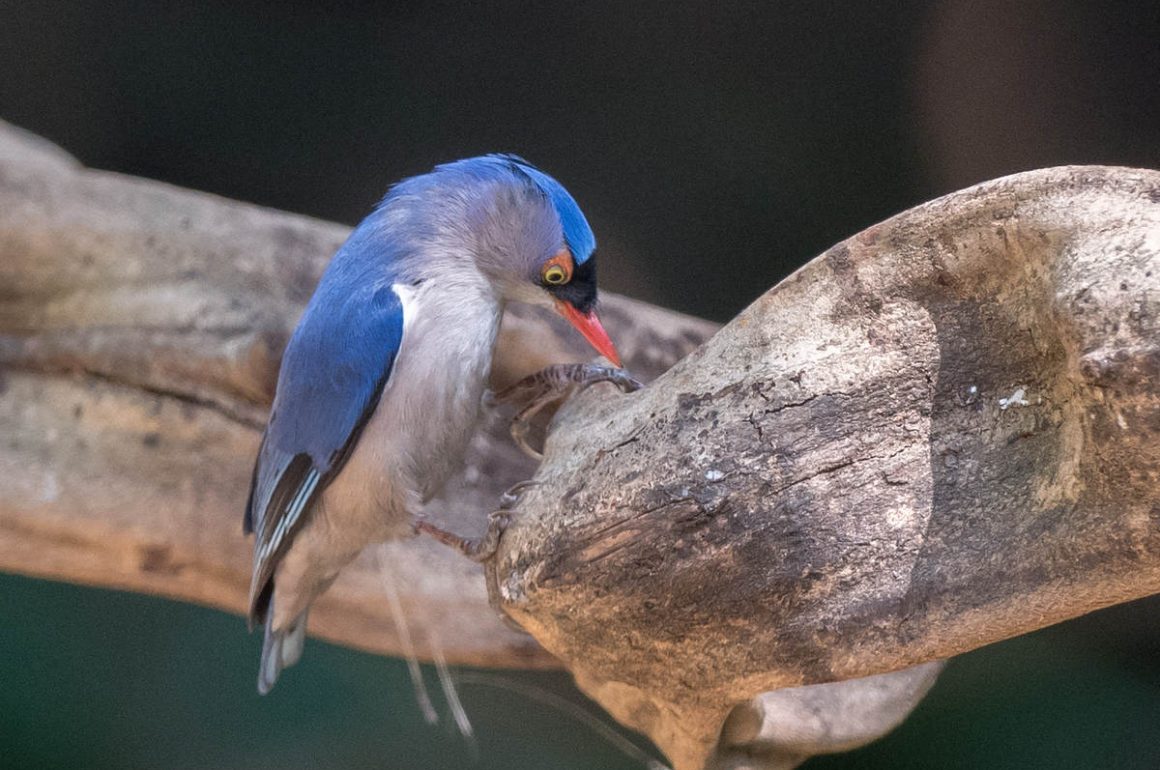
Hongbenghe is a very small village in Yunnan, right next to the border with Myanmar. One road simply ends here, giving the place a real end-of-the-world feeling. Even better, there is a wooden, unguarded, slowly decaying bridge over to Myanmar – so while I do not have the passport stamp to prove it, I can honestly say that I have been to that country as well.
The main attraction for birders here are the hornbills – I have written about them before, so this post will be more on the other birds I saw there in 2017.
A Barred Cuckoo-Dove showed somewhat atypical behavior or had not read its eBird entry about it being “seldom seen out in the open … quick to flee when approached”
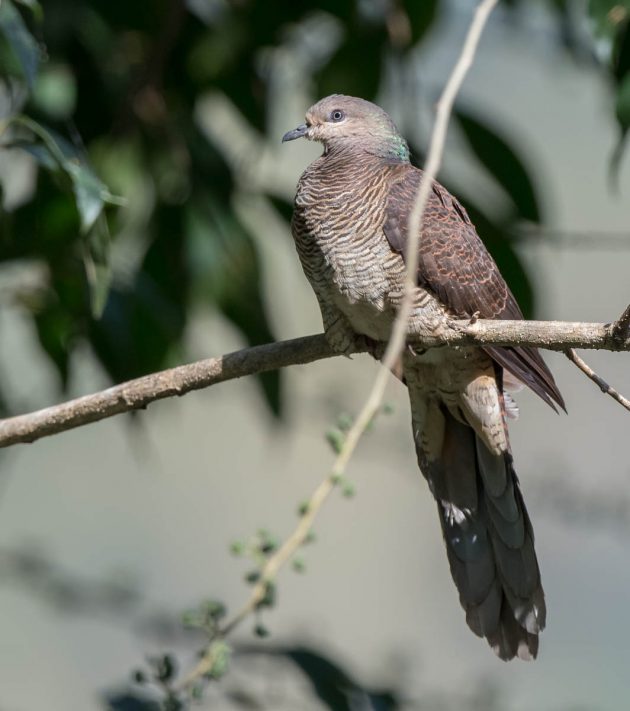
Of course, Hongbenghe, Yunnan is quite far away from Chicago. So, it is difficult to come up with a convincing link to another song recommendation, “Somewhere in Chicago” by Strand of Oaks. On the other hand, recommending this track to a friend of mine yielded another recommendation in reply, “Wild” by Spoon. Some Primal Scream/Rolling Stones influences make this a rather atypical Spoon song, but not in a bad way. Of course, “wild” is not a bad description of the area around Hongbenghe, so there is some closure at least (of an admittedly not very round circle).
At first glance, the difference between the Black-hooded Oriole …
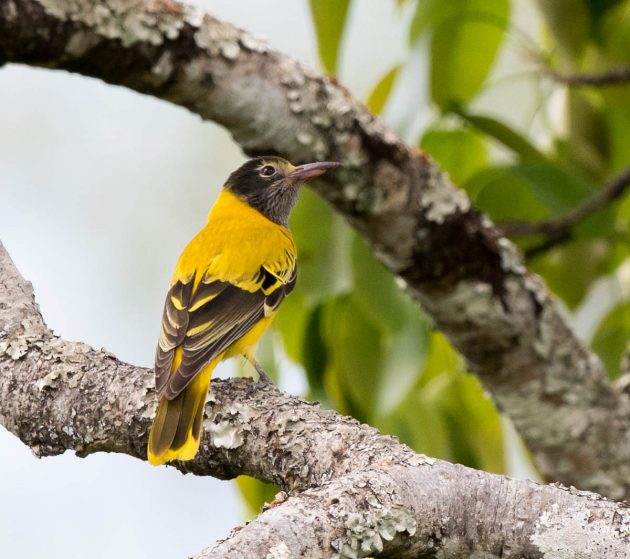
… and the Black-naped Oriole is just that they use different makeup artists.
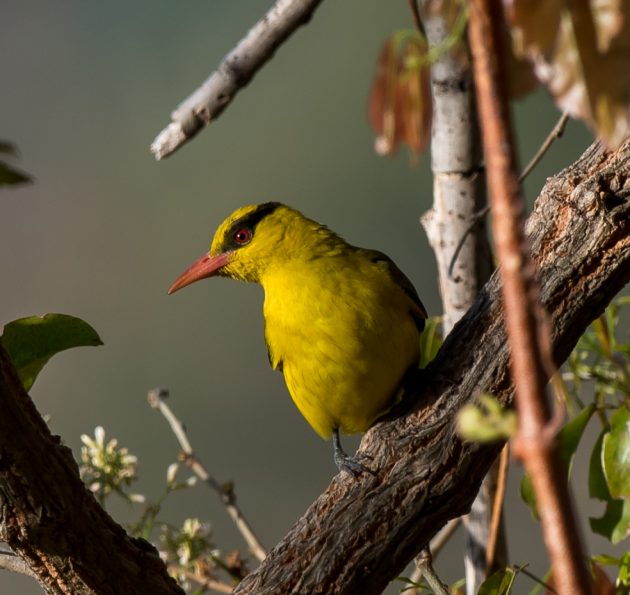
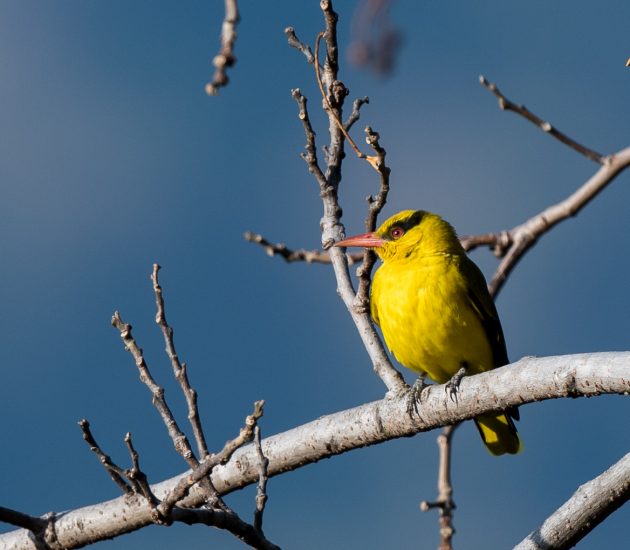
I saw two Pitta species at Hongbenghe, both among the slightly less glamourous among the pitta family: The Blue-naped Pitta …
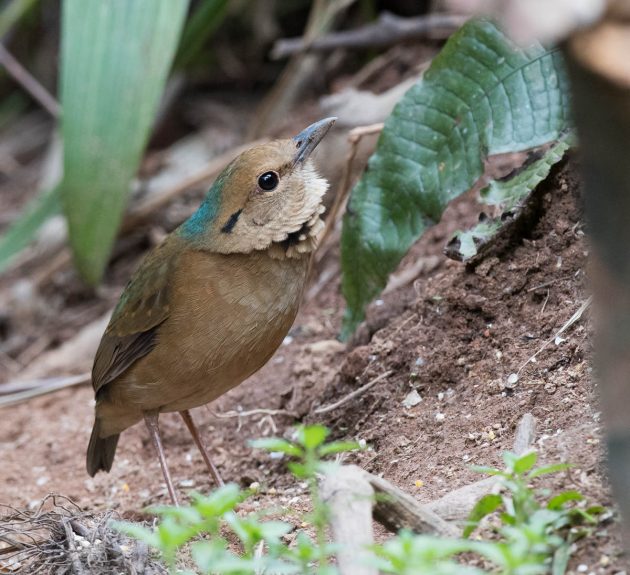
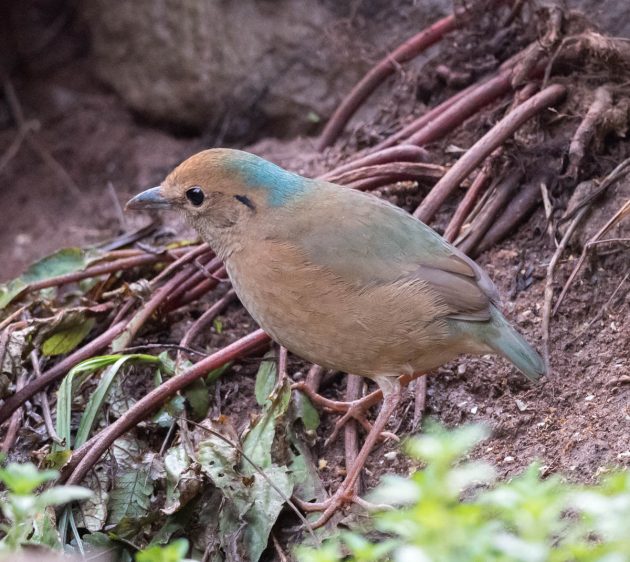
… and the closely related Rusty-naped Pitta.
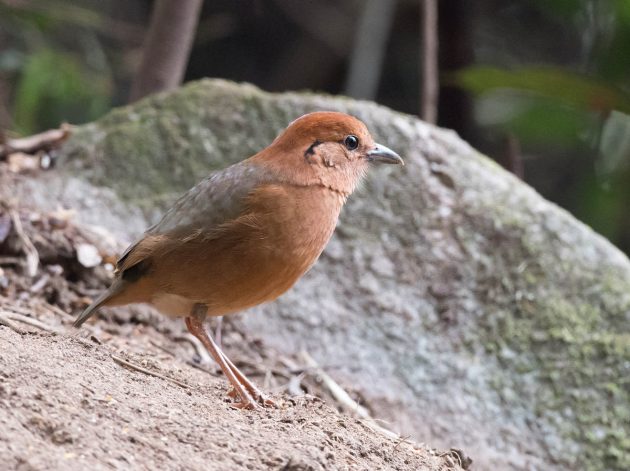
The resident art critic at eBird describes this species as “relatively dull for a pitta, but subtly attractive nonetheless”.
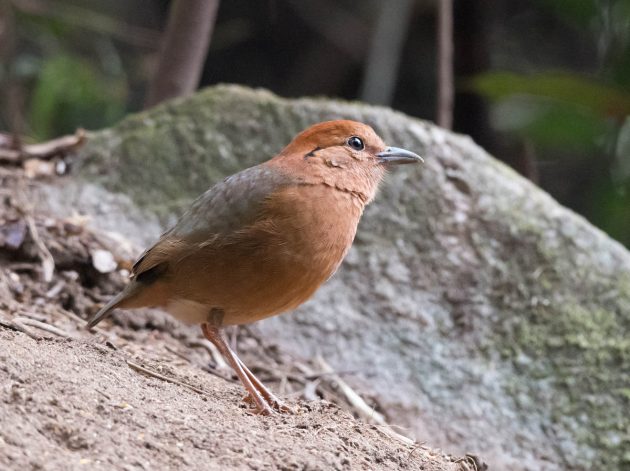
If the critic is into expressionism, maybe he/she will like the Blue-throated Barbet better.
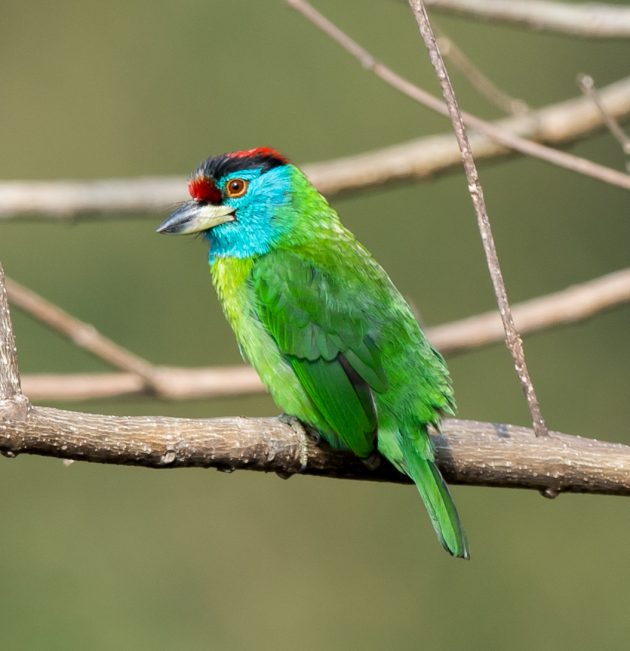
The Blue Whistling Thrush is presumably named for its loud human-like whistling, and possibly for being blue.
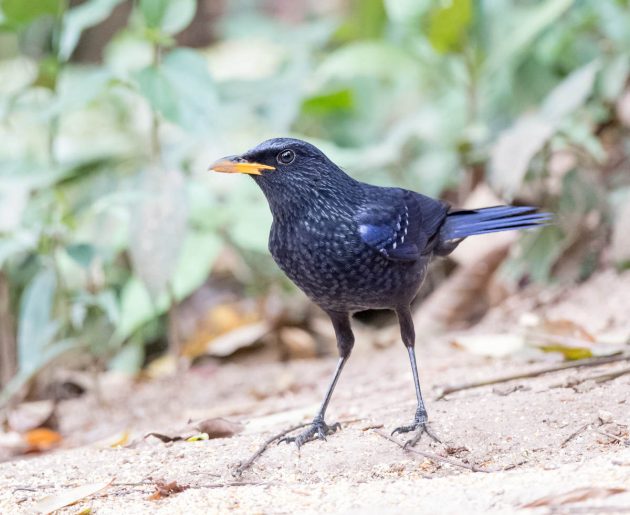
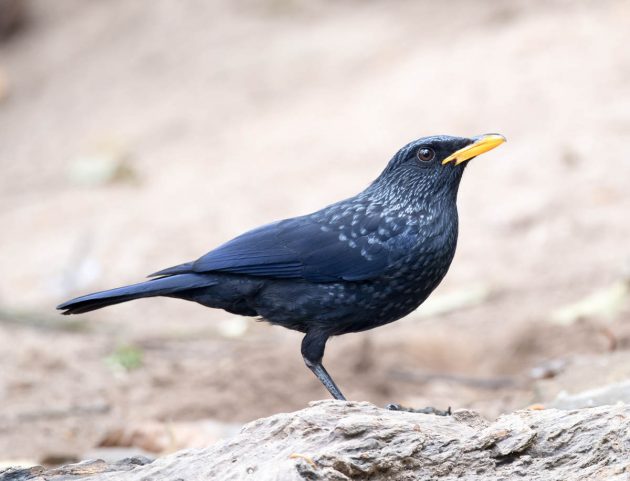
Like a bad boyfriend not changing into nicer clothes for an evening out, the Brown-cheeked Fulvetta gets chided on eBird for not making any efforts: “an unapologetically drab and unmarked fulvetta”.
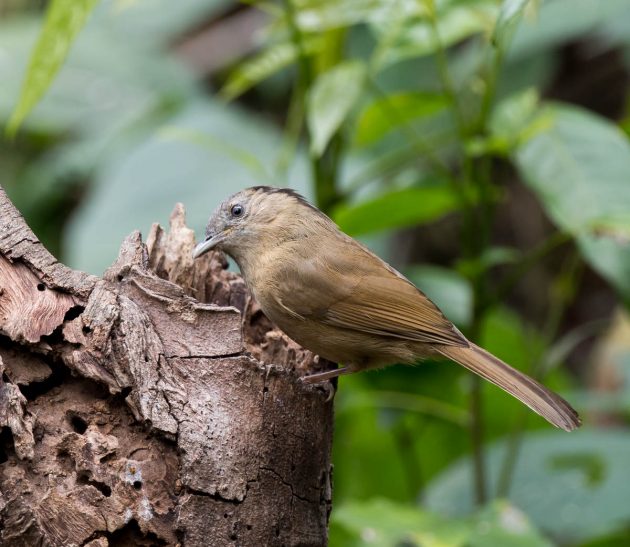
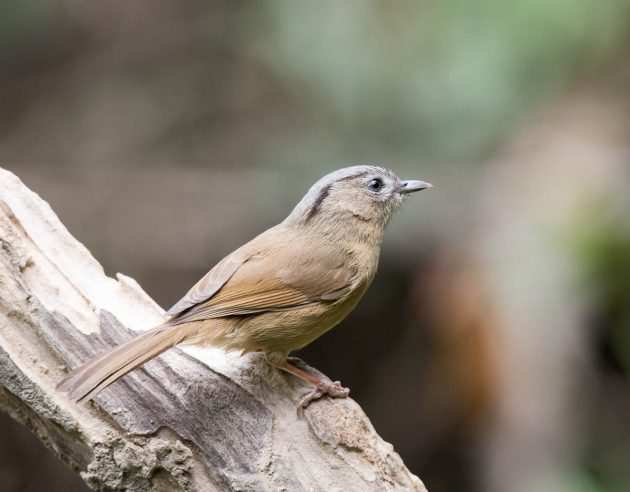
The Chestnut-headed Bee-eater apparently digs nest-burrows in which to lay its eggs. The length of the burrow depends on the softness of the ground: “burrow 45 cm long in hard earth, up to 3 m long in soft earth” (HBW), though my guess is that it also depends on how good the relationship of the burrowing couple is.
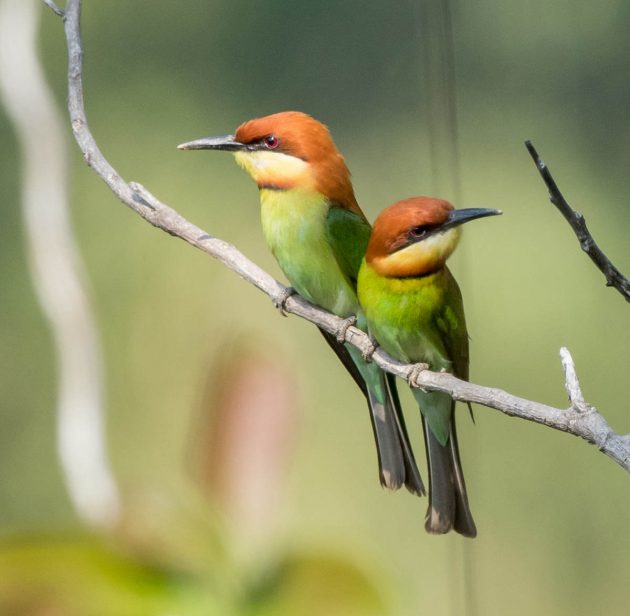
“It is not deep enough yet!”
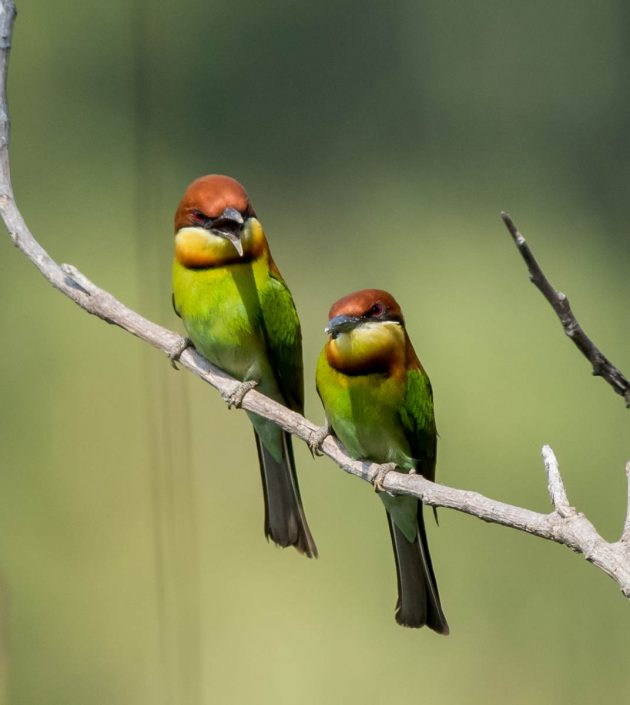
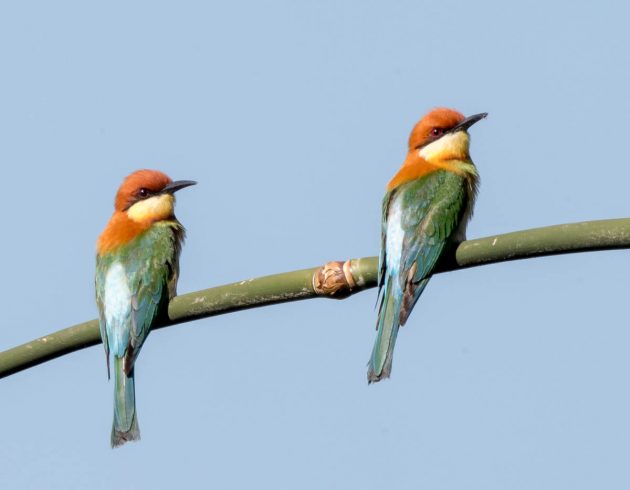
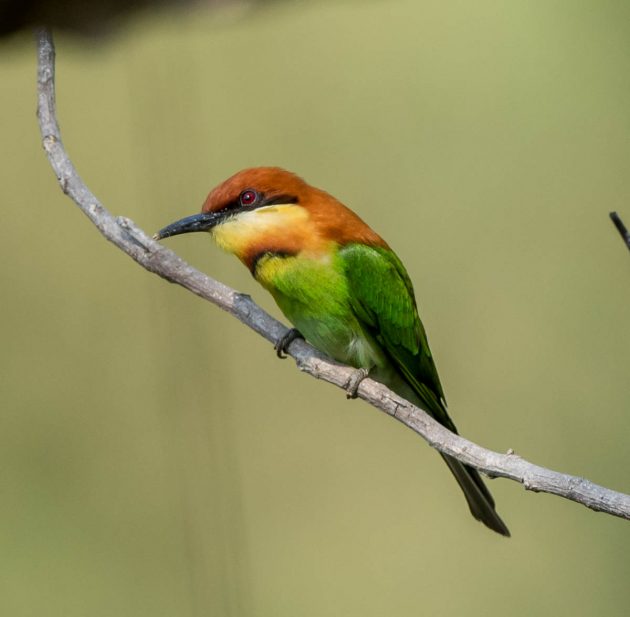
The Latin name of the Collared Falconet, Microhierax caerulescens, indicates that the bird should be a bluish microfalcon. I am ok with the microfalcon but do not quite get the “bluish” (caerulescens) part.
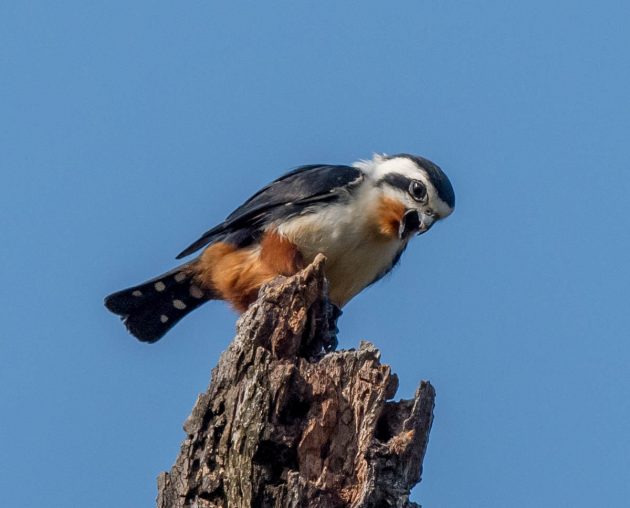
Anyway, it is a very cute-looking bird if you are big enough not to be among its prey of (mostly) insects. While it is listed as Least Concern, it is rare in China – the range map in the HBW barely touches Chinese territory. This makes it an attractive target for (particularly older) Chinese birders who prefer not to leave the country.
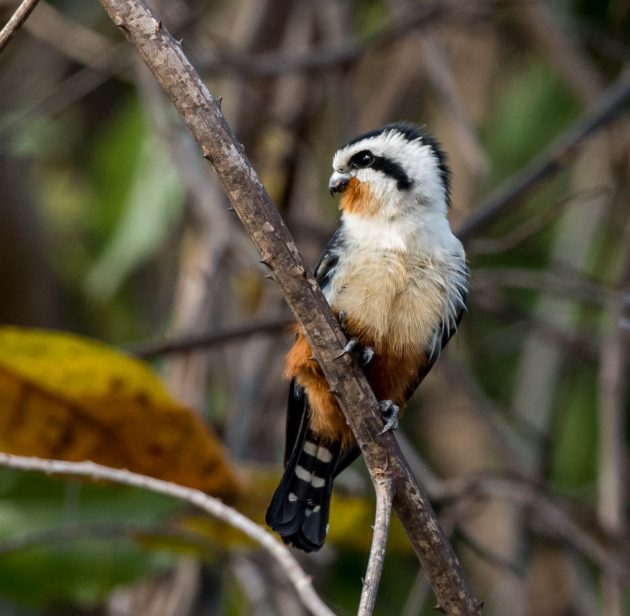
Given that the HBW describes the bird as “A falconet very shrike-like in size and behavior”, maybe the photo below should not be shown to juvenile shrikes.
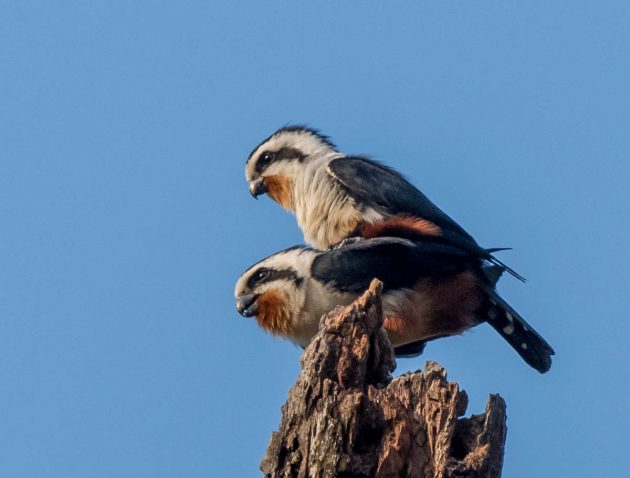
Similar to the falconet, the collar is not really the most obvious feature of the Collared Treepie. The Latin name “frontalis” (meaning, as you can guess, something like “frontal”) referring to the distinct black forehead makes more sense.
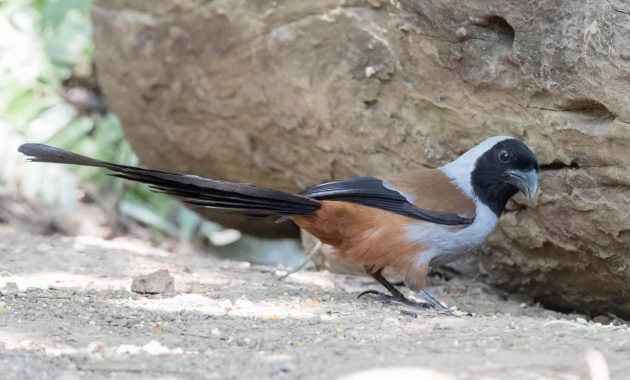
It seems that this is another species for which the standard phrase of scientists anywhere, “more research needed”, applies. According to the HBW, sounds and vocal behavior are poorly documented while there is no information on incubation and fledging periods, and the behavior section only has the rather lame statement “General behavior much for others of the genus.”
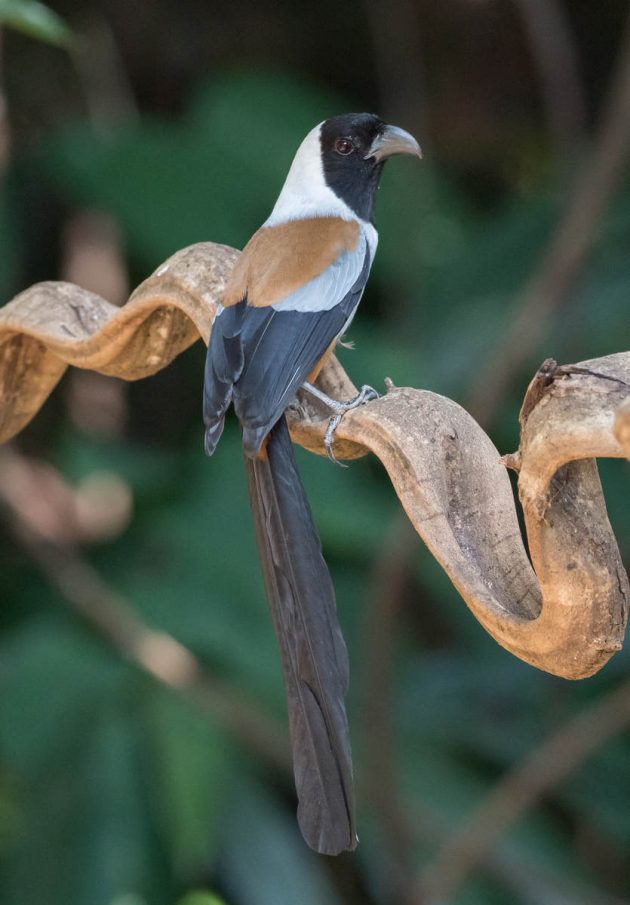
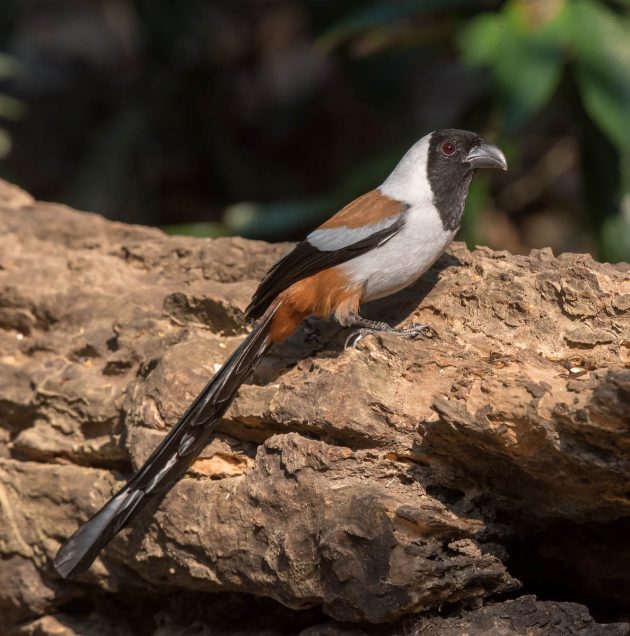
The Common Green Magpie fortunately does not look common at all. The Latin name “chinensis” is somewhat misleading as is much more common in Southeast Asia than in China – apparently, it was chosen in the mistaken belief that the type specimen had come from China.
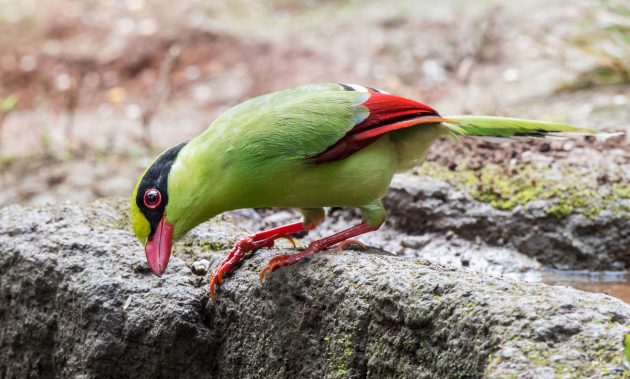
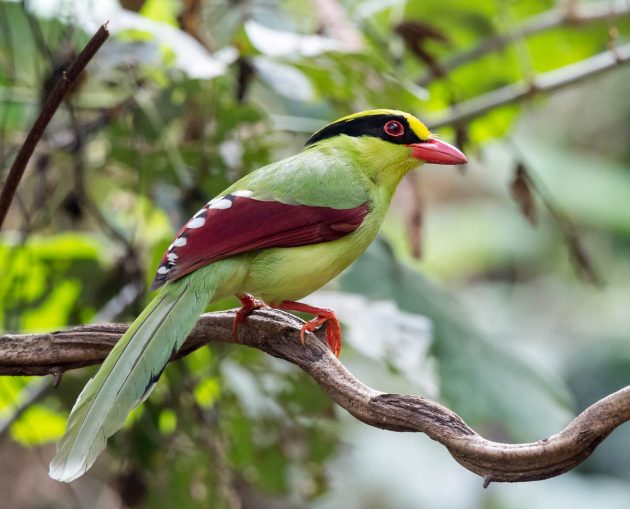
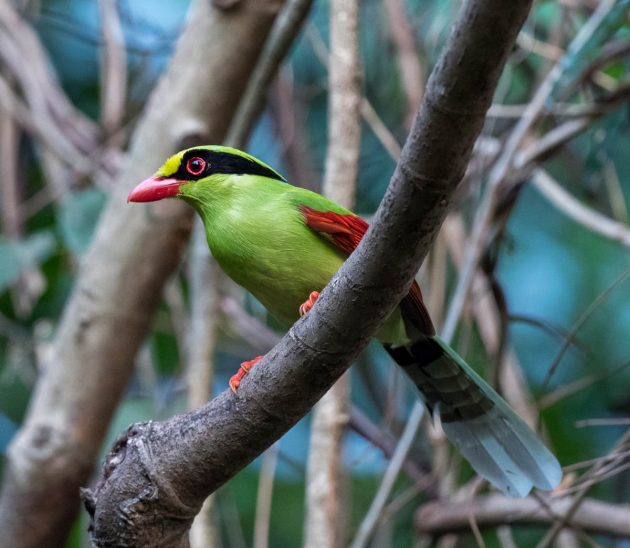
The Crested Bunting would certainly be a highlight in a post on buntings (such as this one) but does not particularly stand out here in Yunnan.
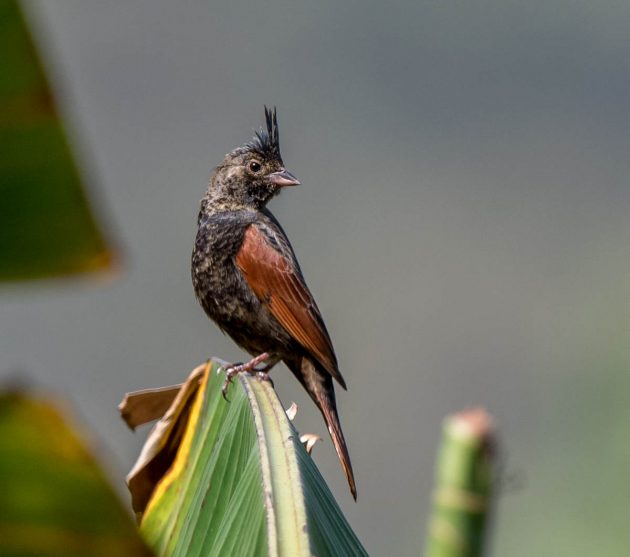
The Crested Serpent Eagle is another species bound to suffer from a naming error in perpetuity. Its Latin species name is cheela, which according to the HBW is because the common Indian name for the Black Kite, Chil, has been wrongly given to it.
This species is fairly widespread, with 21 subspecies, some of which may eventually turn out to be full species.
Even though the English name may indicate that it mainly feeds on crests, it really mostly eats reptiles, primarily tree snakes (HBW).
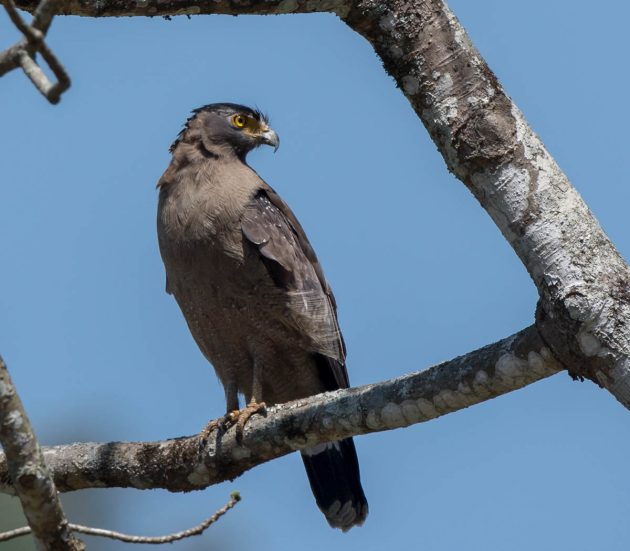
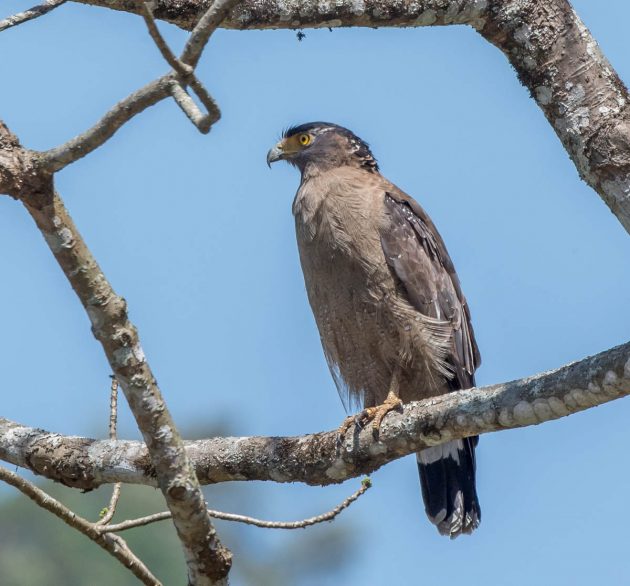
A bit of chemical knowledge may help you understand the Latin species name of the Golden-fronted Leafbird. The Latin name for gold is Aurum (abbreviation Au in the periodical system of elements), and the species name thus (in a surprisingly logical way not typical for bird names in general) is aurifrons.
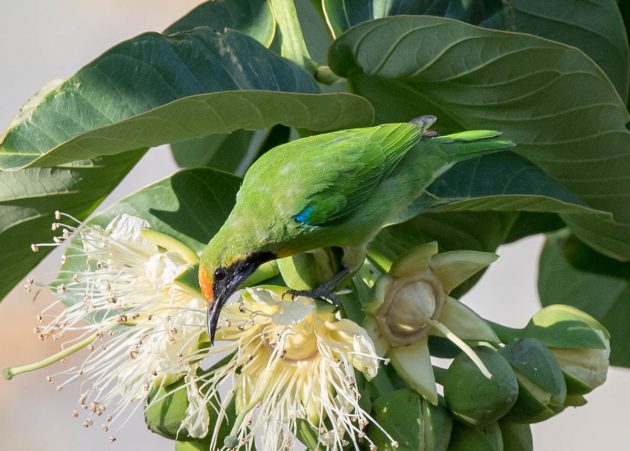
I have written about the hornbills of this area before. Still, a few photos as reminders: Great Hornbill …
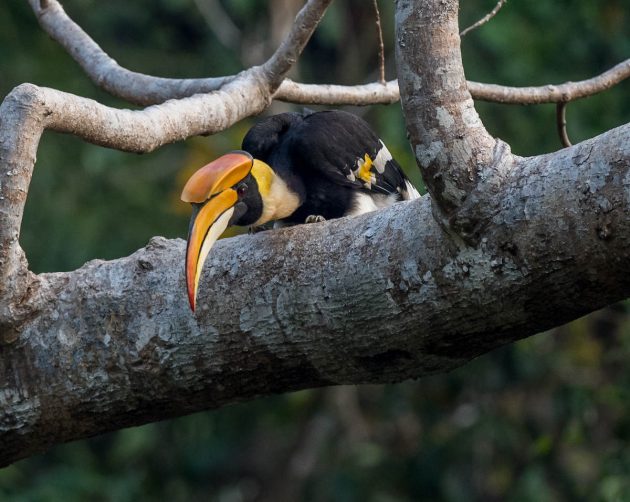
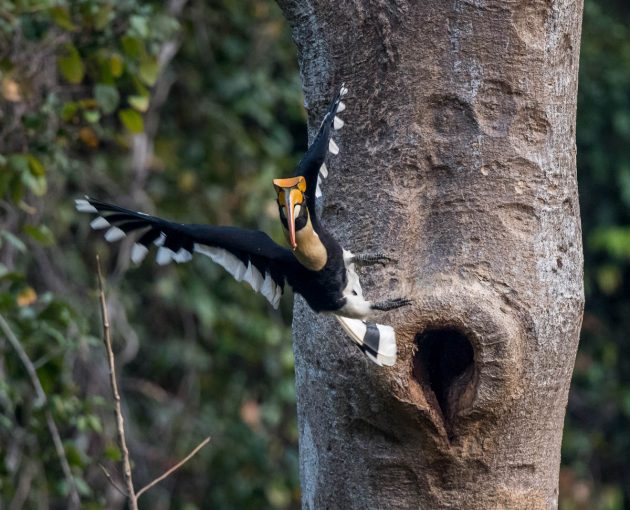
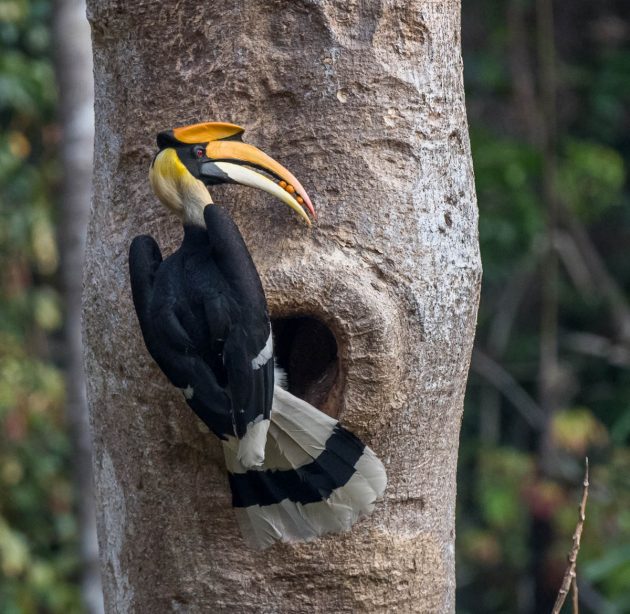
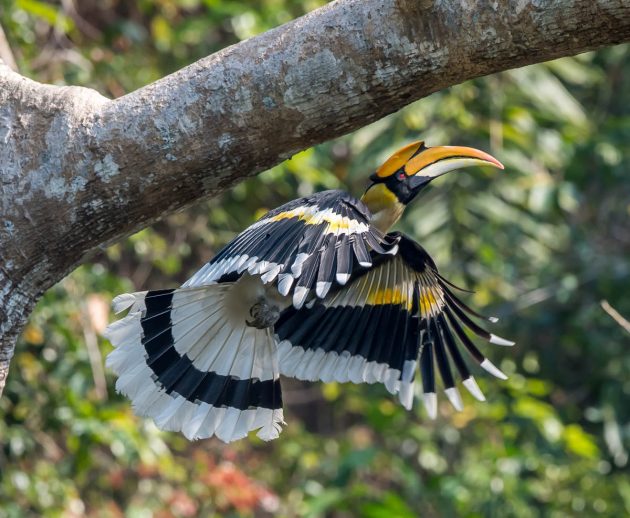
…. Oriental Pied Hornbill …
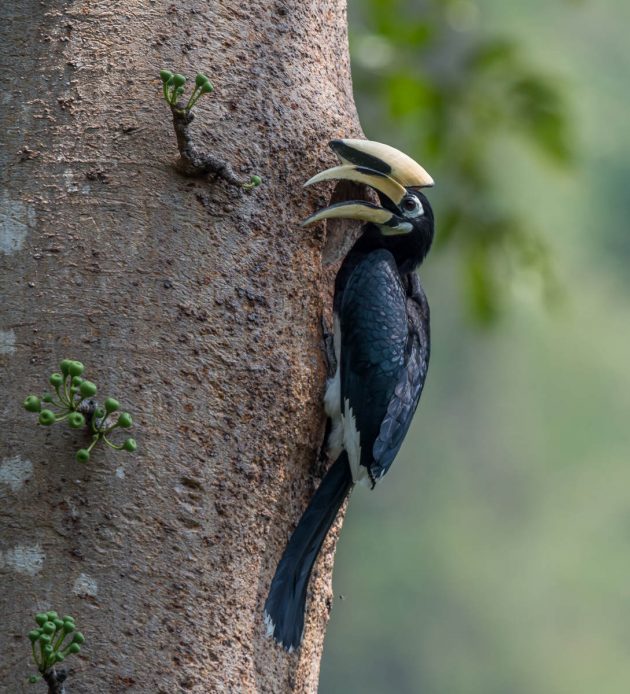
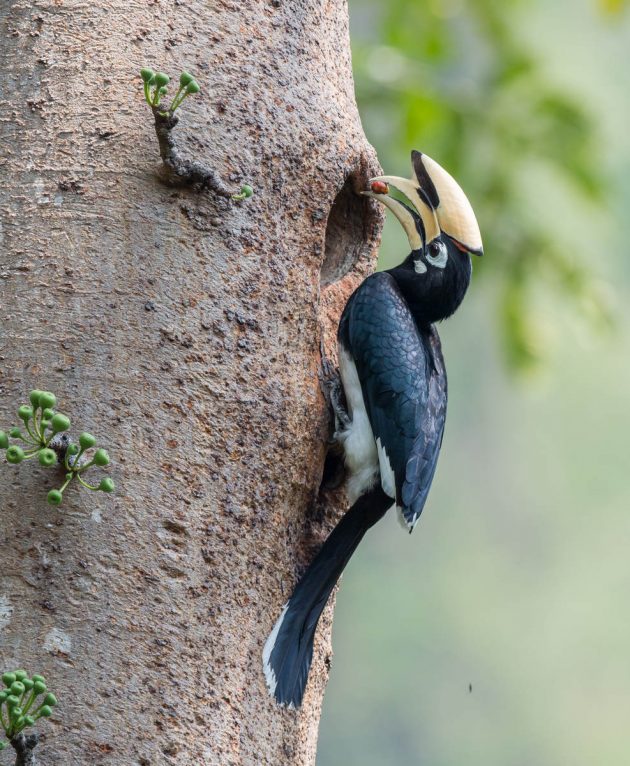
… and Wreathed Hornbill.
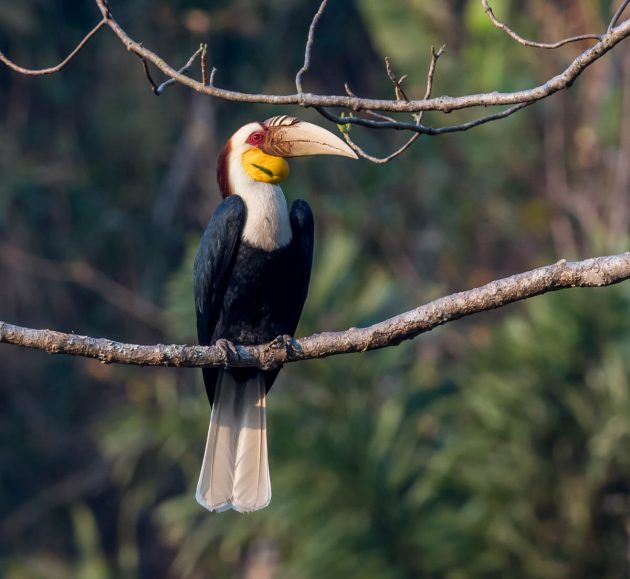
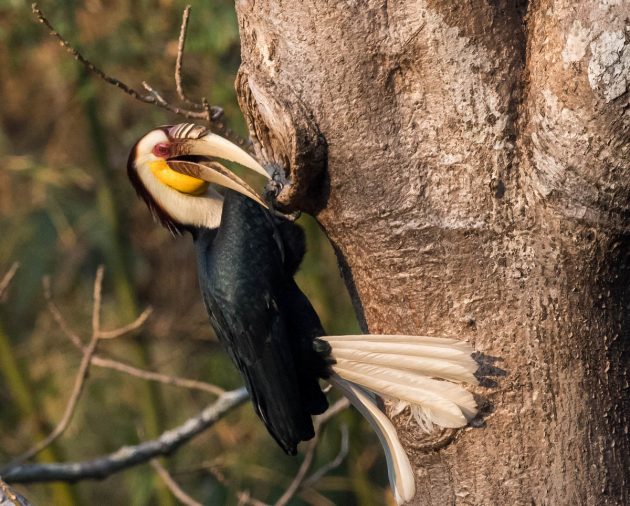
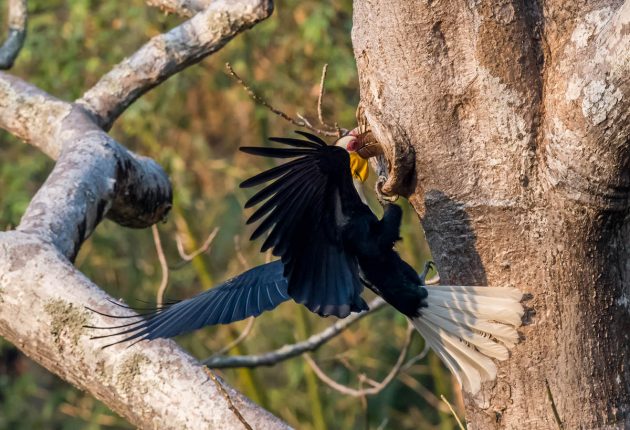
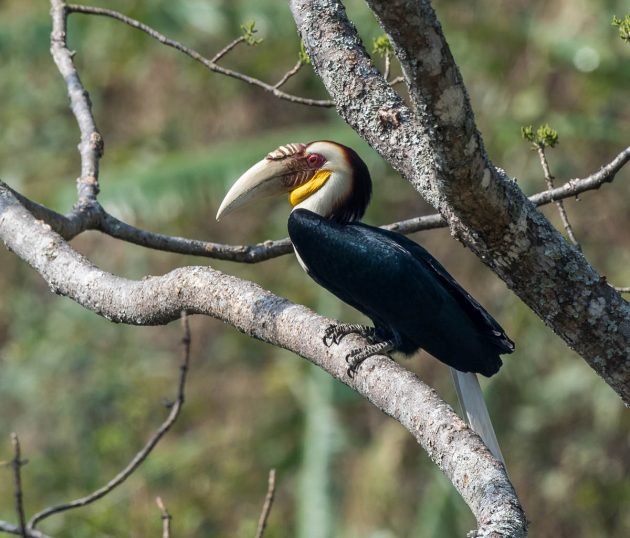
Assuming that the (North American) Imperial Woodpecker and the Ivory-billed Woodpecker are both extinct, the Great Slaty Woodpecker is the largest woodpecker species alive. To my knowledge, any theories blaming the decline of the American species on the Asian one are misguided, though I have seen even more stupid conspiracy theories gaining ground in the USA and elsewhere.
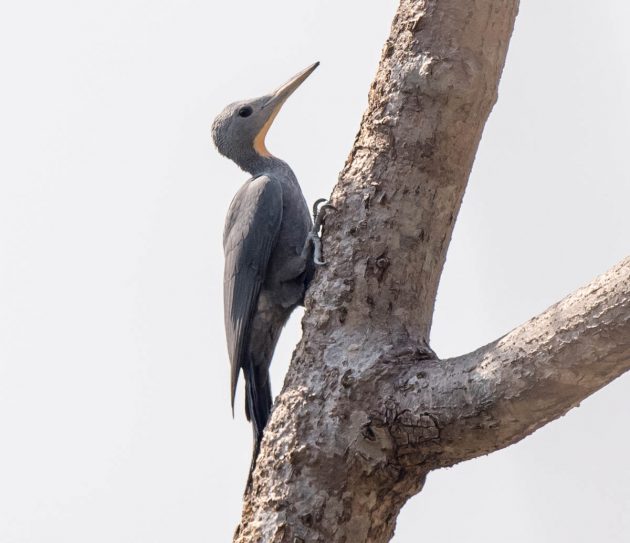
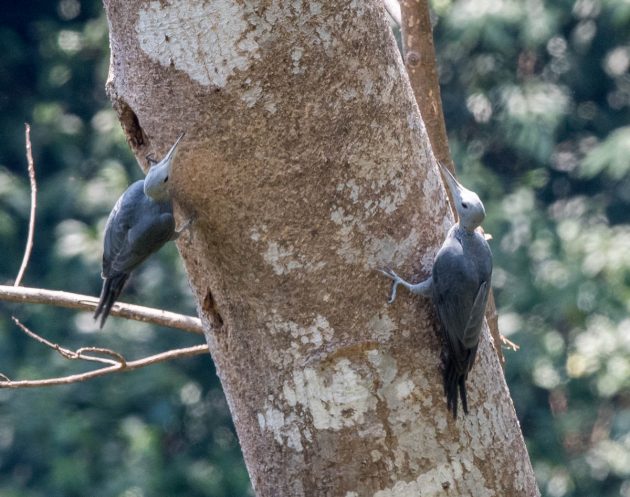
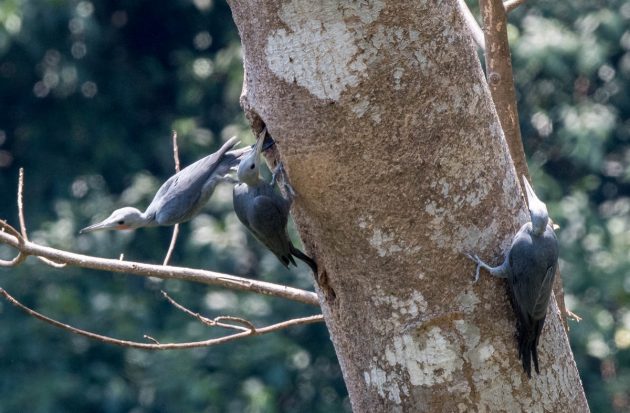
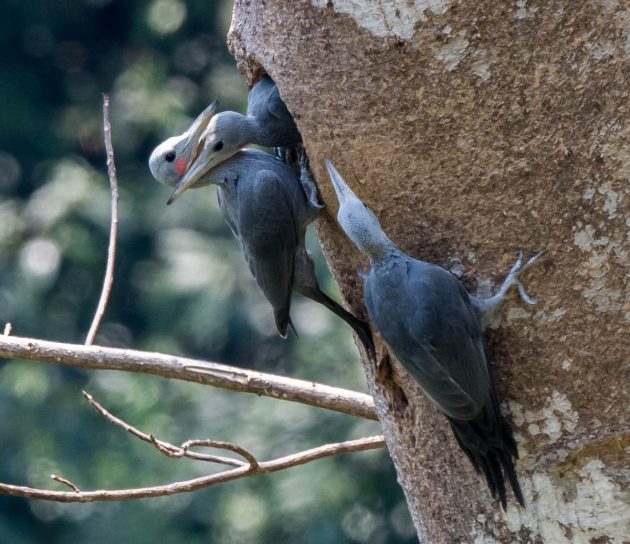
One would think that for a species as common in Europe as the Grey-headed Woodpecker, the HBW would spend some effort to update the species entry. Instead, the entry asks us to “Please bear with us while this update takes place”.
A few months ago, I wrote an email to my bank asking them a specific question. After a long delay, they finally got back to me – but not to deal with my question but to ask me whether my question was still relevant. Maybe we have to assure the HBW first that birds are still relevant before they will take any action.
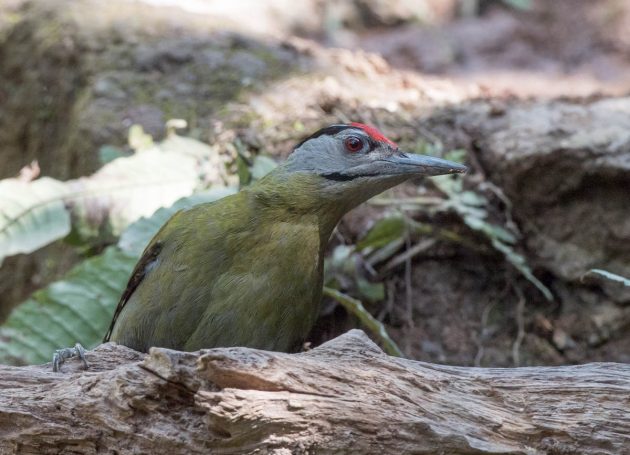
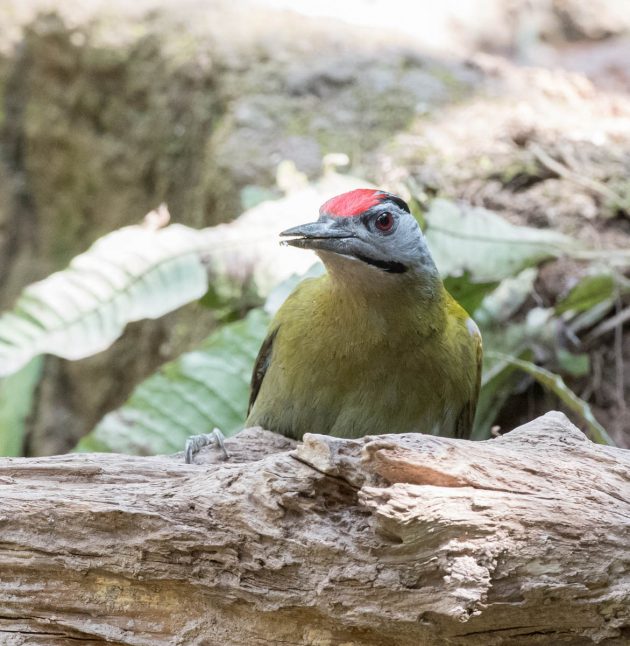
According to Merriam-Webster, the meaning of “Lesser” is “of less size, quality, degree, or significance”, or “of lower status”. Unsurprisingly, Lesser Yellownapes are not fond of this dictionary – most of them never use it at all.
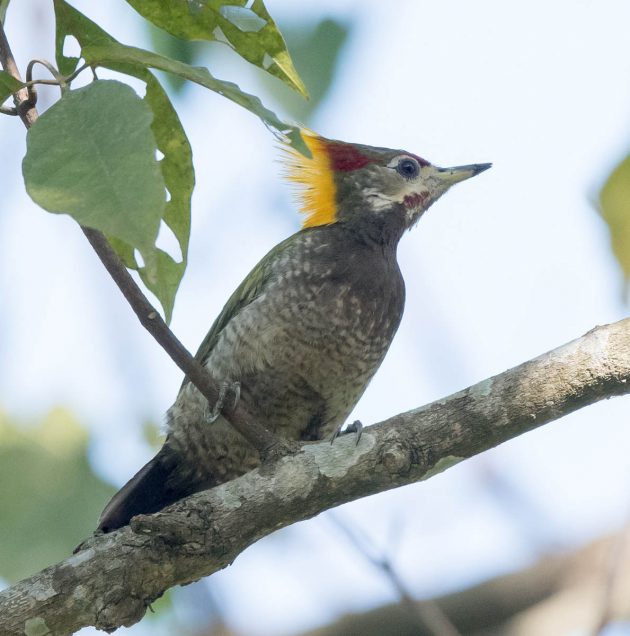
eBird gets very excited about the White-crested Laughingthrush: “Stunningly white peaked crest, combined with a thin dark mask and russet-brown body, makes this laughingthrush an otherworldly beauty” …
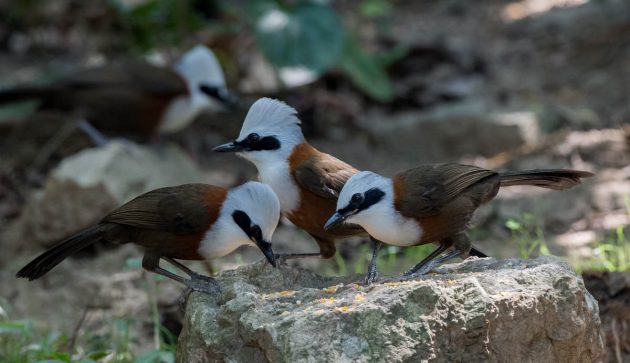
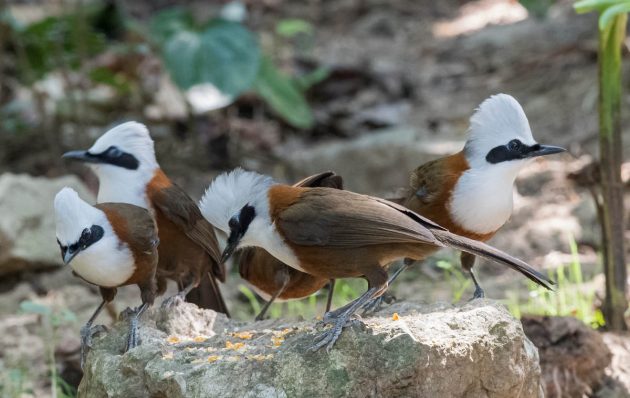
… but is toning it down a bit for Black-throated Laughingthrush (“sleek gray songbird”) …
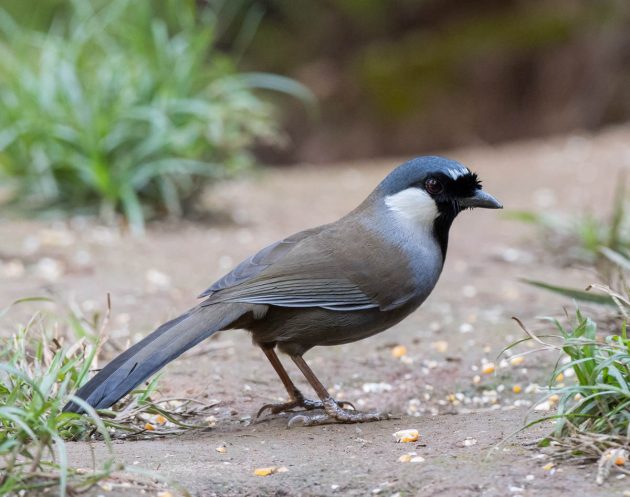
… more so for Lesser Necklaced Laughingthrush (“a mid-sized laughingthrush”) …
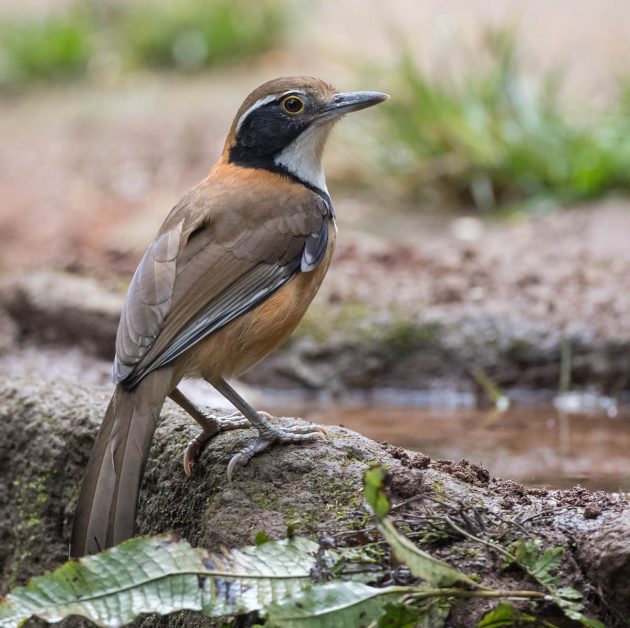
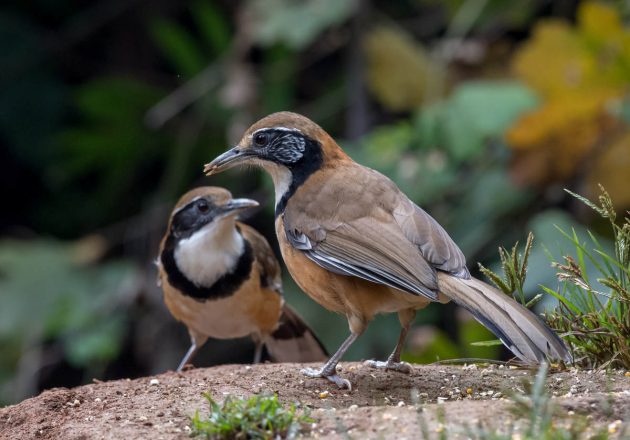
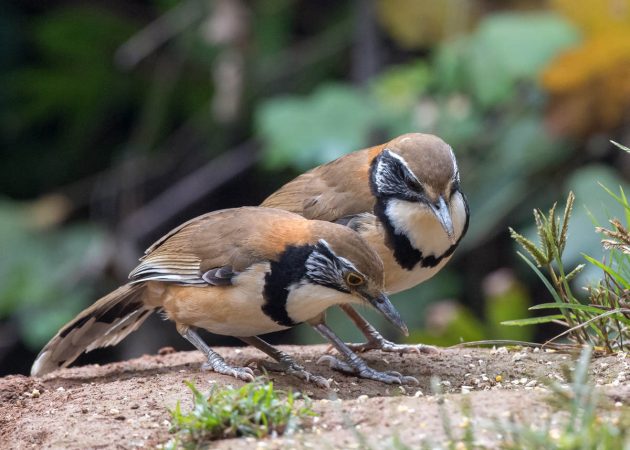
… and appears entirely unenthusiastic about the Greater Necklaced Laughingthrush (“shy and difficult to see well”).
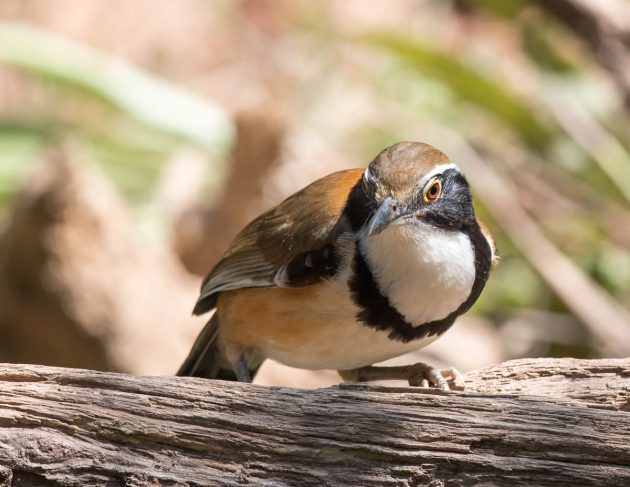
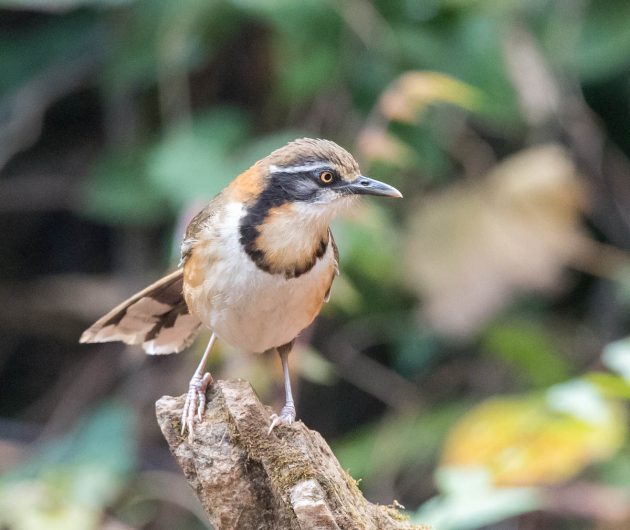
The male Grey Peacock-Pheasant looks quite attractive, though most human males would rightfully shudder to wear a shirt covered in purplish dots.
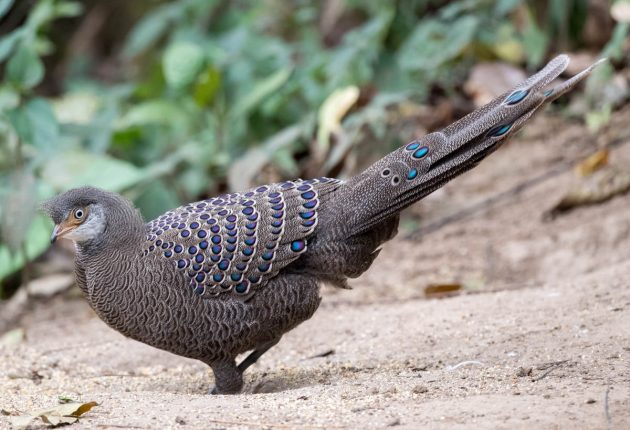
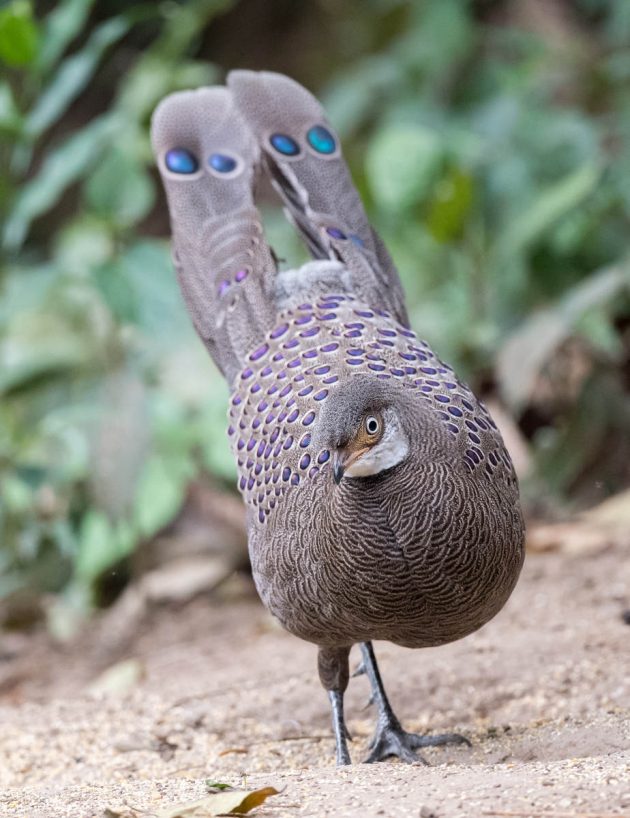
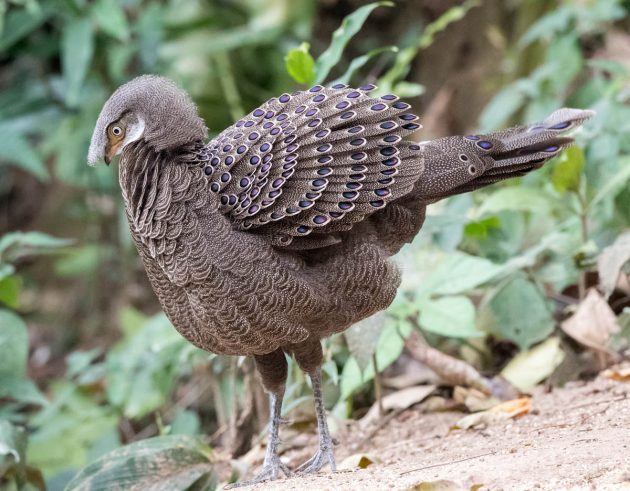
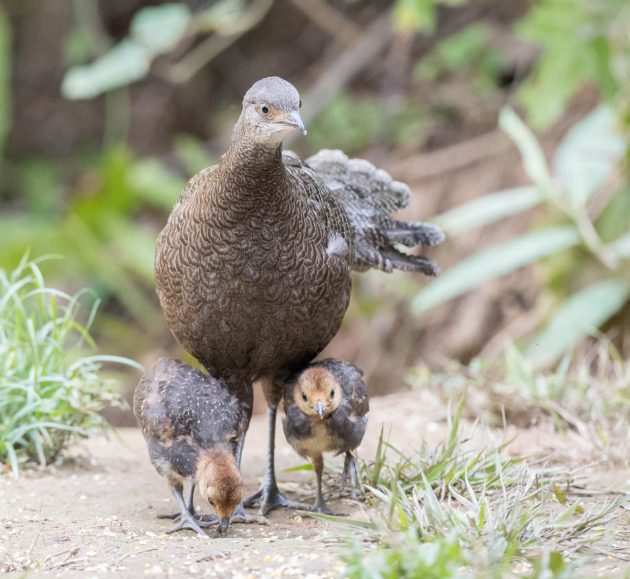
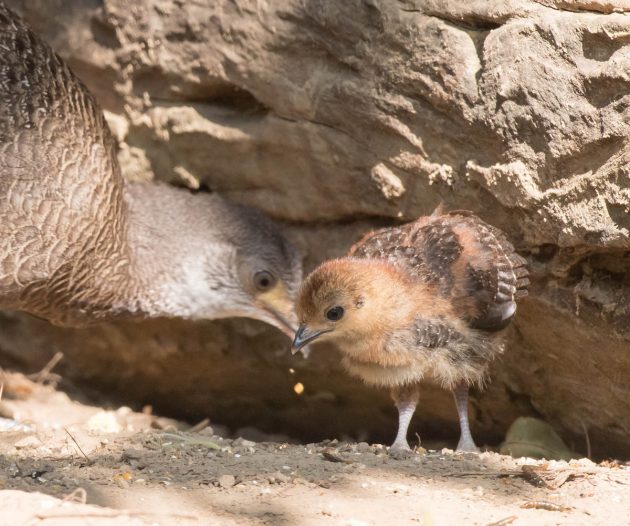
The Kalij Pheasant is not very good at denouncing typical avian gender stereotypes either.
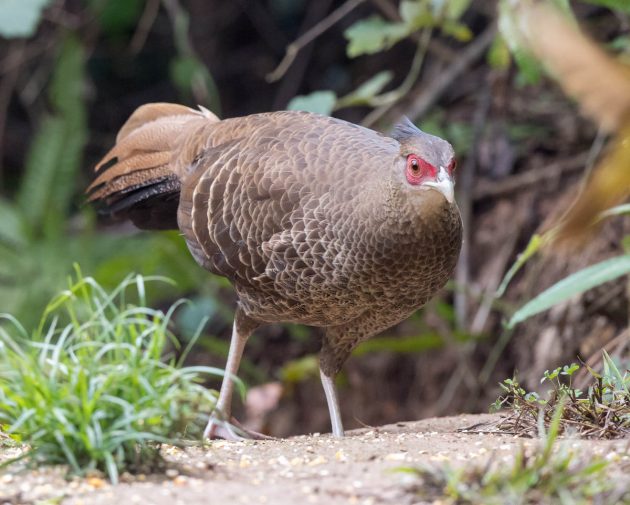
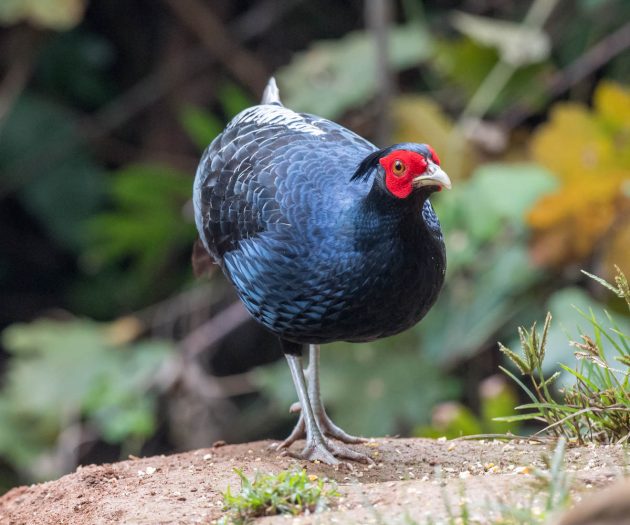
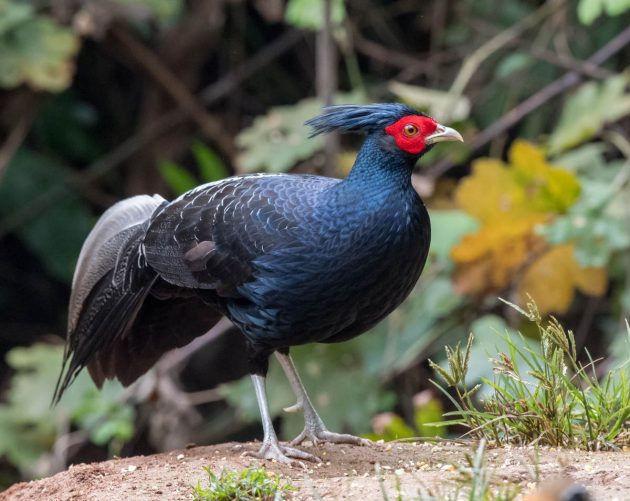
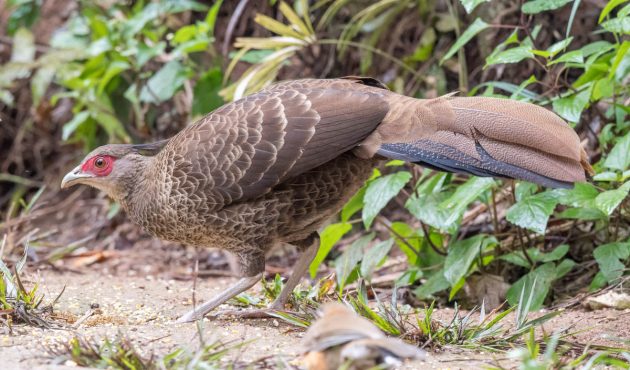
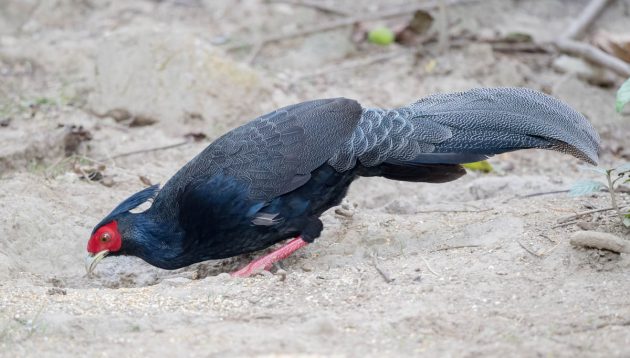
The White-cheeked Partridge is classified as Near Threatened. It also tends to be a bit confused as its Latin species name is atrogularis, or black-throated. The bird would prefer a more consistent naming approach, as for a long time it thought it was two different species.
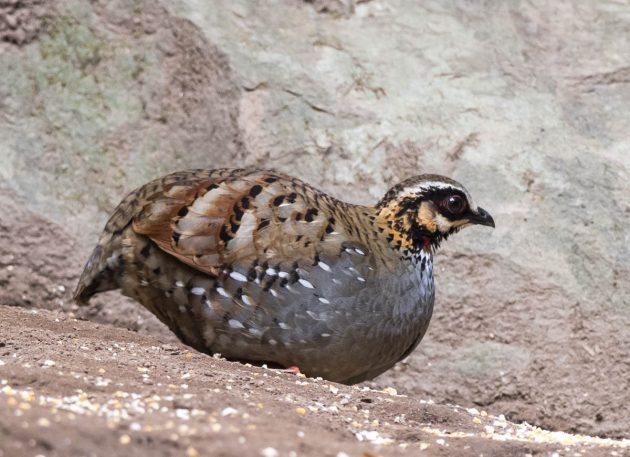
Among all these exotic species, it is nice to see the familiar face of a shrike – specifically, a Grey-backed Shrike.
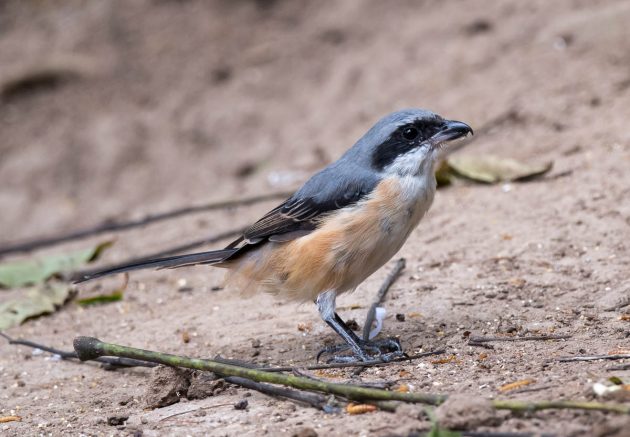
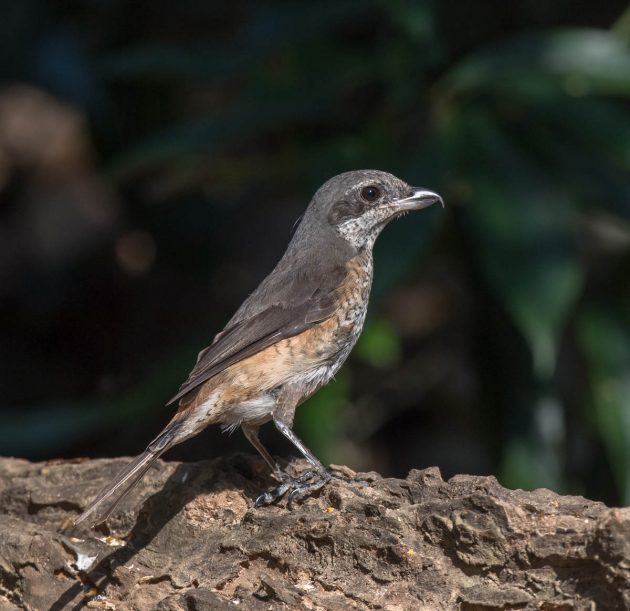
It seems that blue is very popular with Yunnan flycatchers this season – witness the Hill Blue Flycatcher …
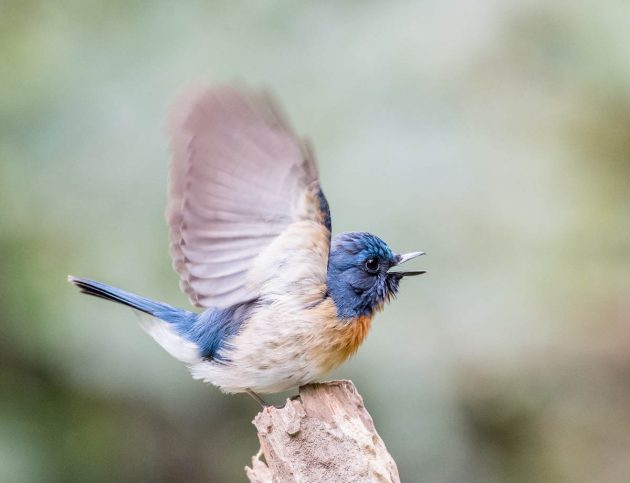
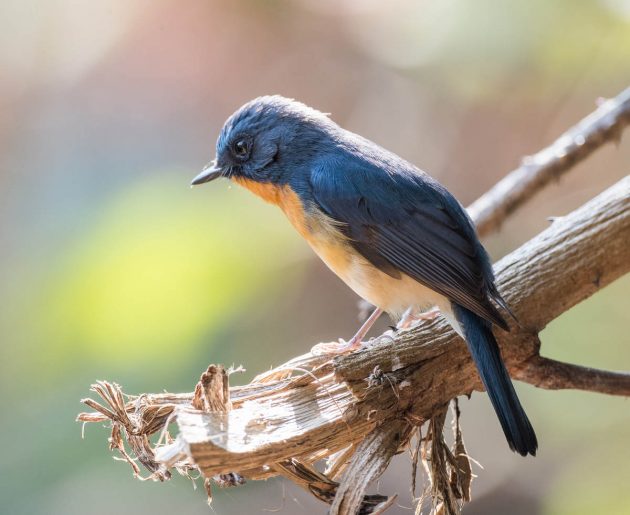
… the Blue-throated Flycatcher …
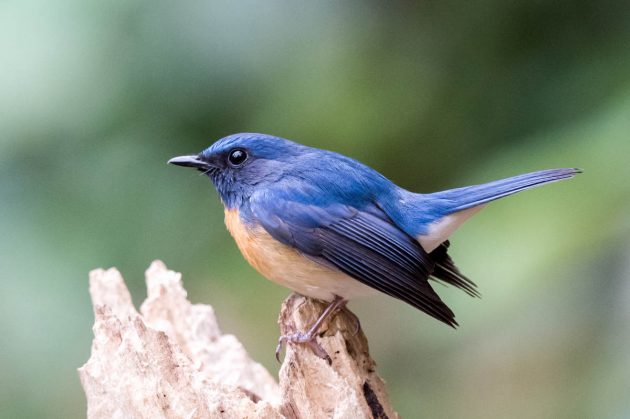
… White-tailed Flycatcher …
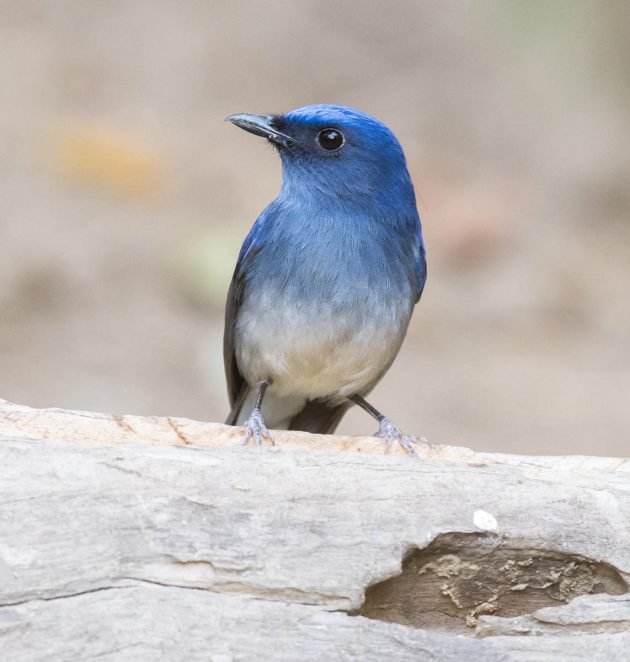
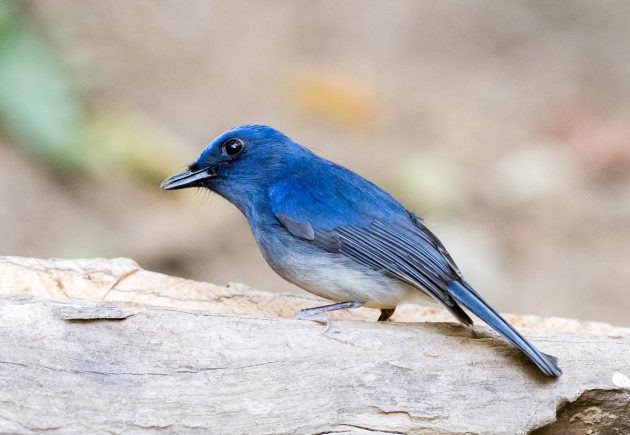
and the Small Niltava (though admittedly, the female is just accessorizing with blue).
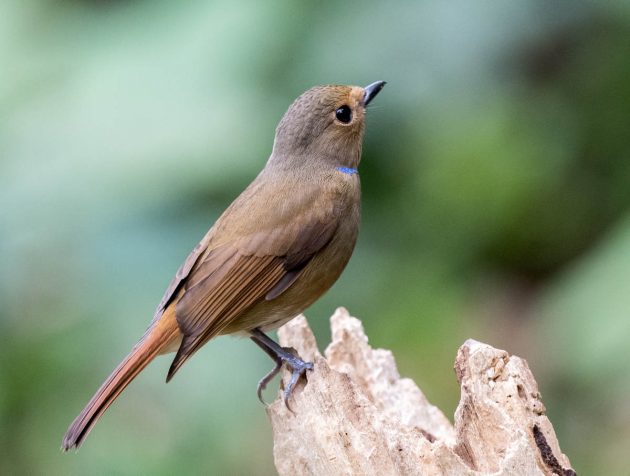
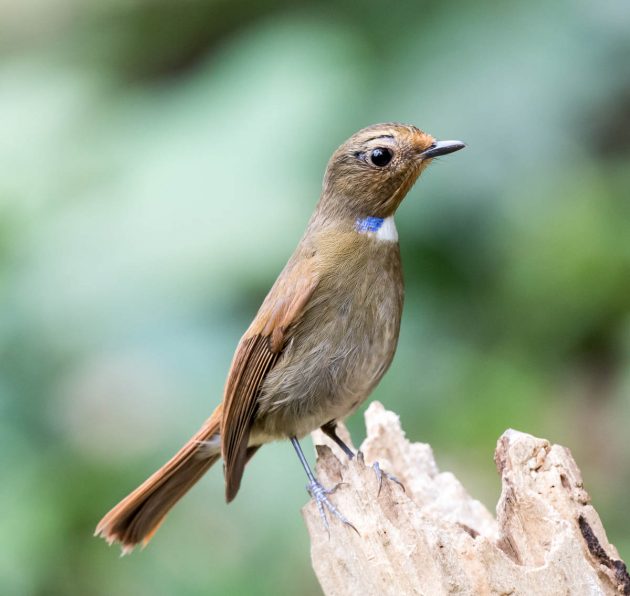
In contrast, babblers seem to prefer brown, such as the Grey-throated Babbler …
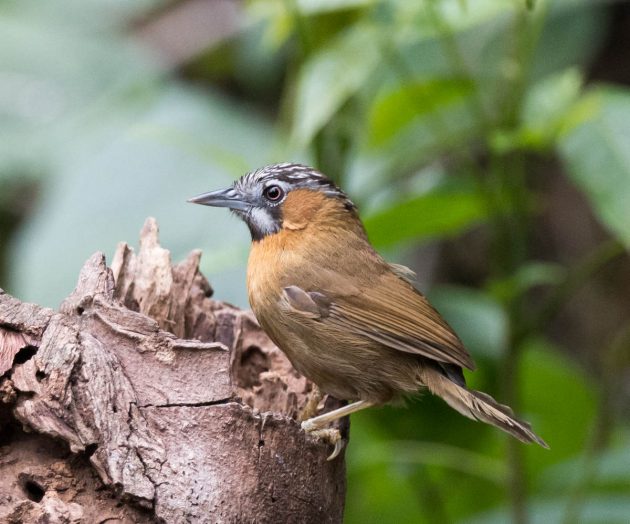
… the Puff-throated Babbler …
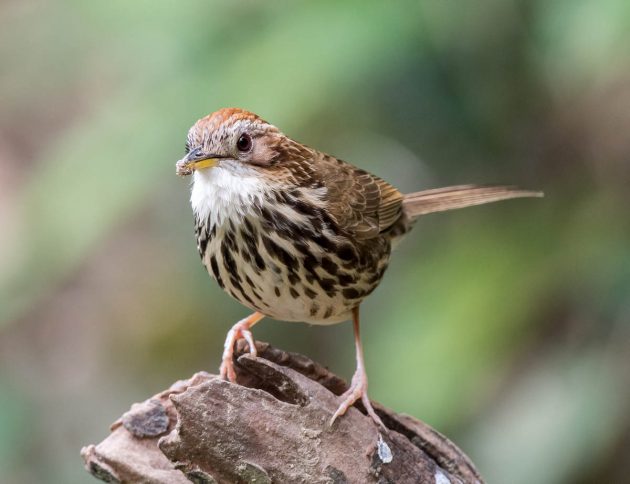
[In Xishuangbanna, Yunnan, the Dai people have an annual water-sprinkling festival. It seems that the Puff-throated Babbler practices a similar tradition]
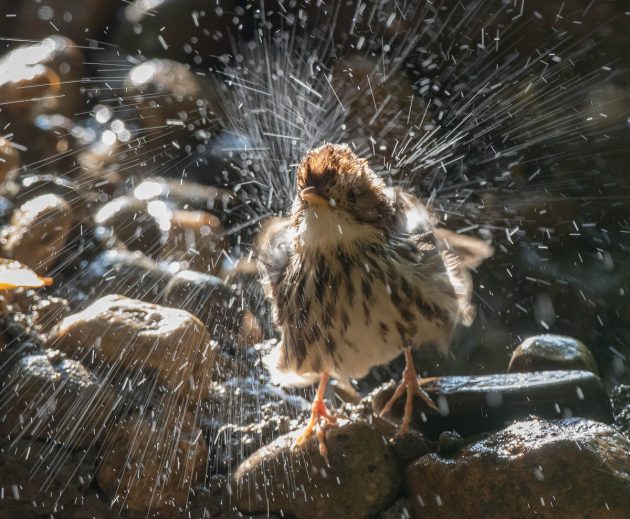
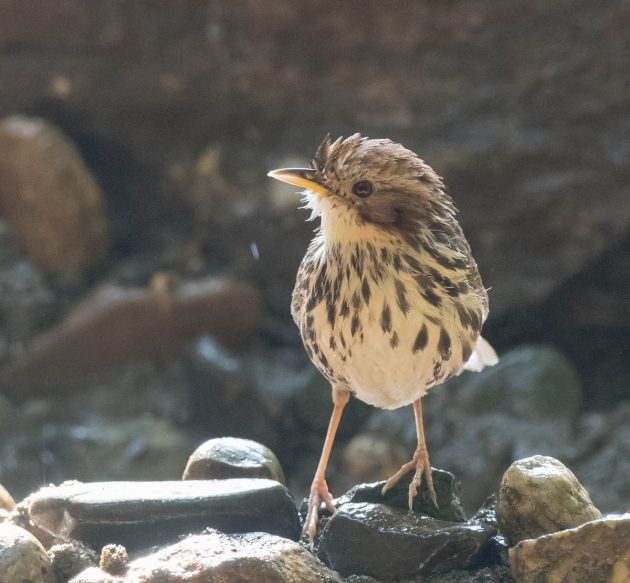
… the Rufous-capped Babbler …
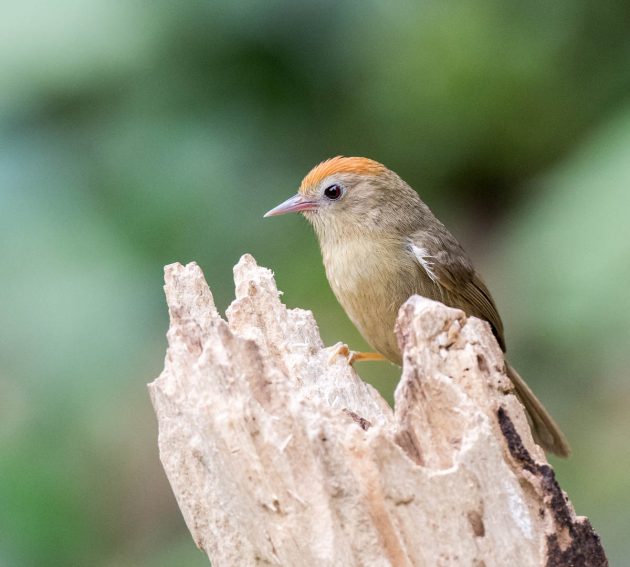
… and the Striped Tit-babbler.
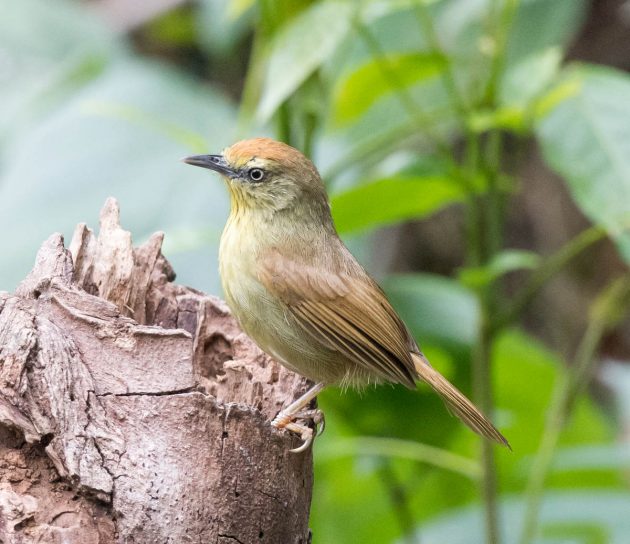
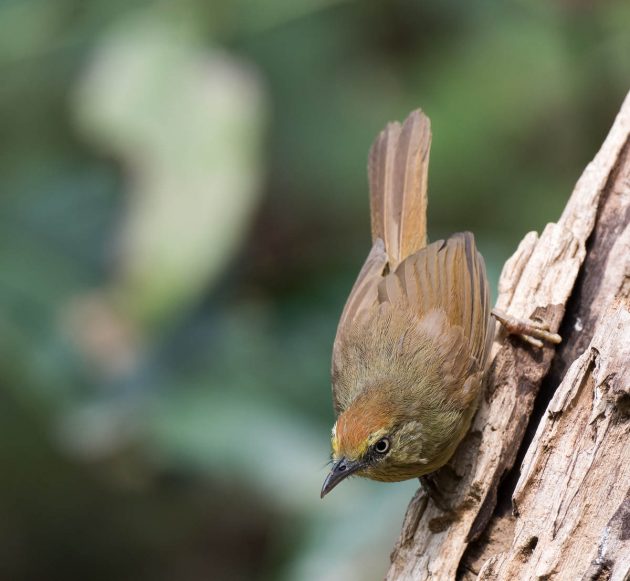
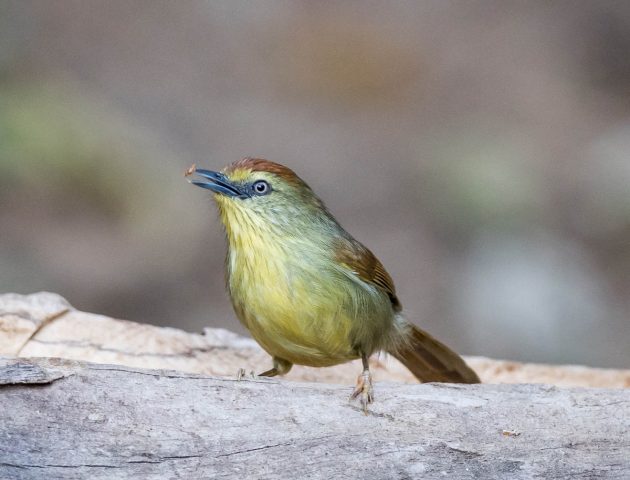
The HBW makes fun of the Large Scimitar Babbler, discussing its habit of “hopping about in [a] very ungainly manner”. I am sure the babbler in question will have a similar opinion on any attempt of HBW staff at flight.
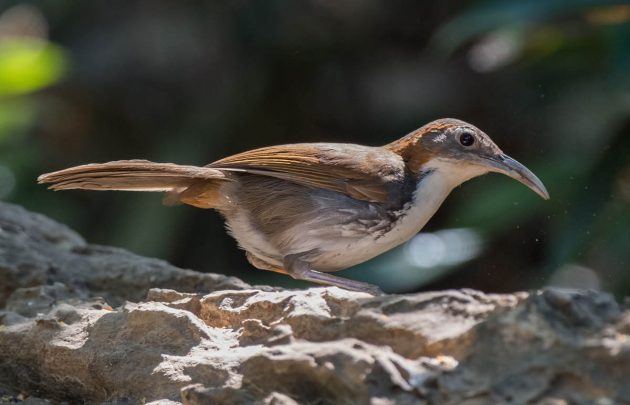
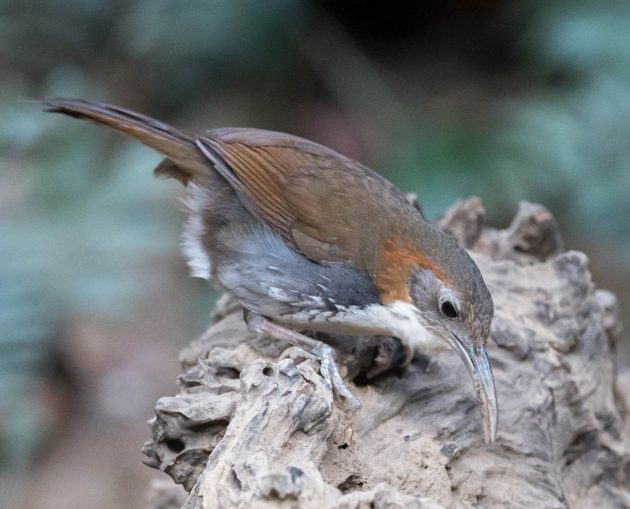
This is probably a Red-billed Scimitar Babbler unless it is a Coral-billed Scimitar Babbler. HBW states that the Red-billed SB is distinguished from very similar Coral-billed SC by the longer, more decurved, and orange bill (the bill of the Coral-billed SC is described as red). So if you think the below is orange, the proper ornithological name for the color is red. Logic for birders.
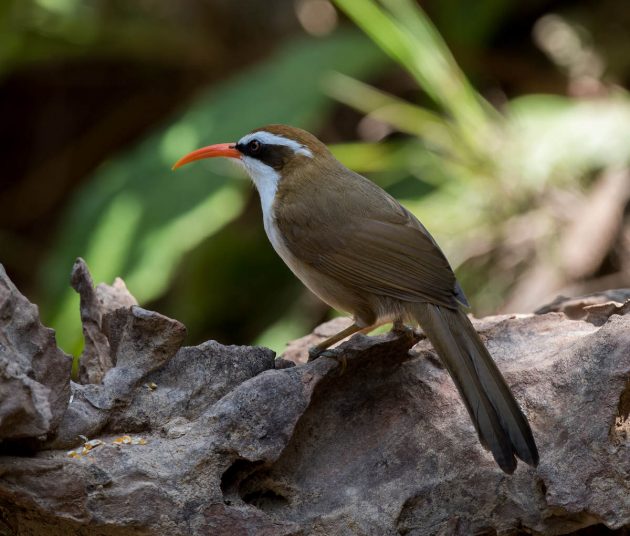
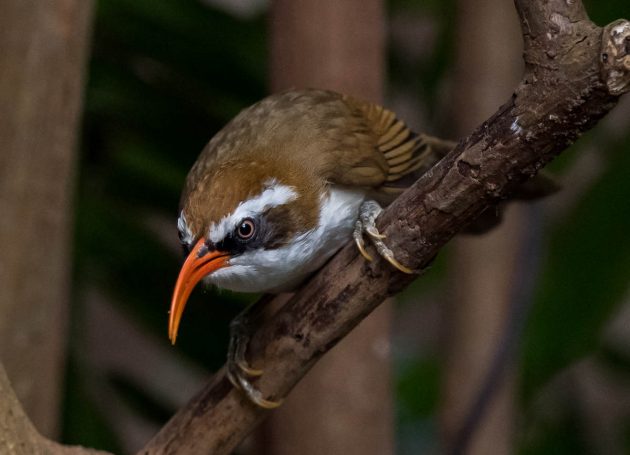
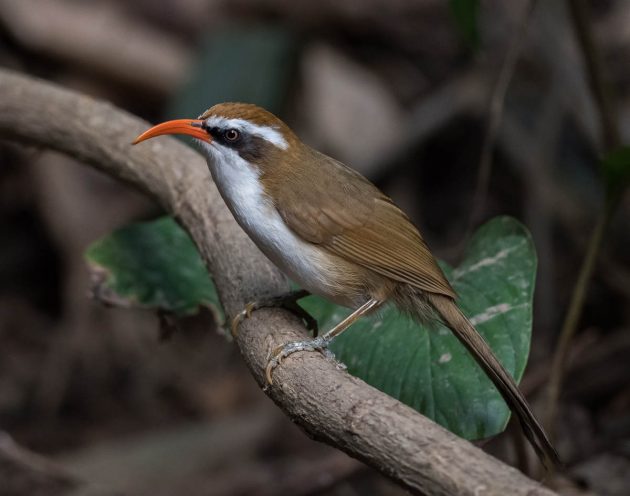
With this in mind, you will not be surprised to see that this Red-headed Trogon has a brown head.
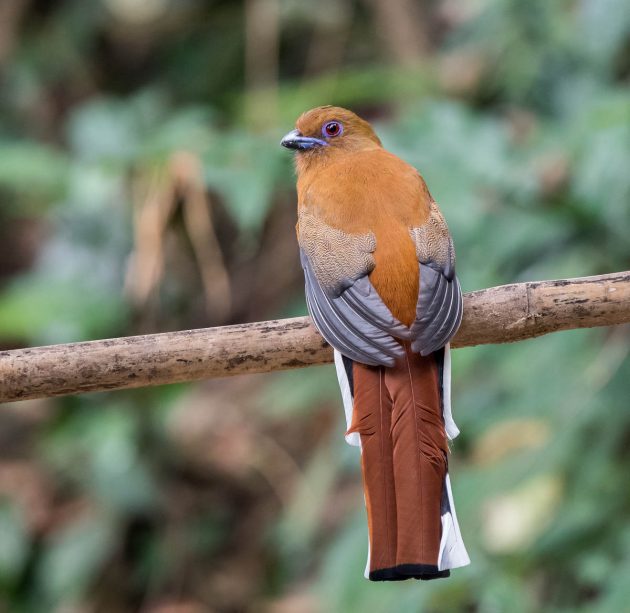
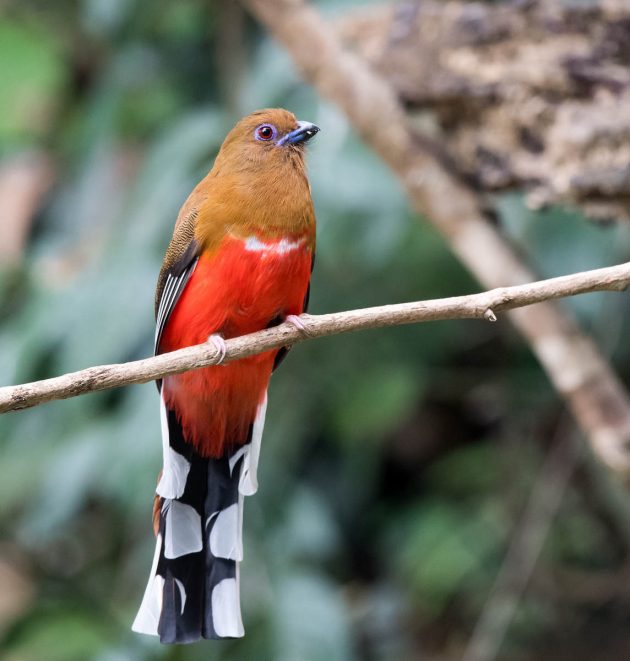
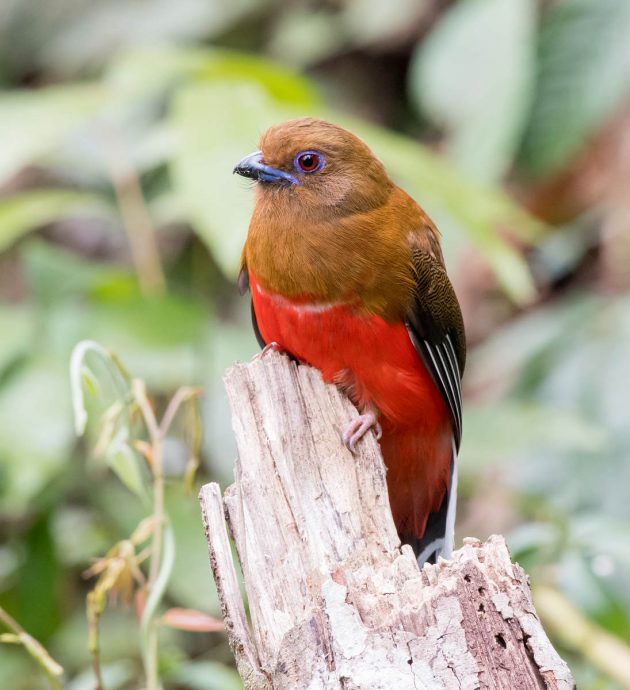
Admittedly, that is the female. The male has a proper red head. A 50% hit rate is not that bad.
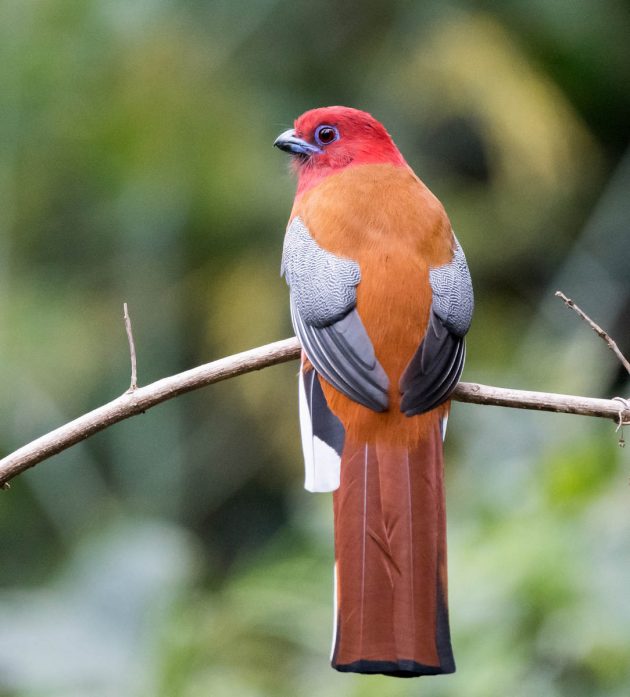
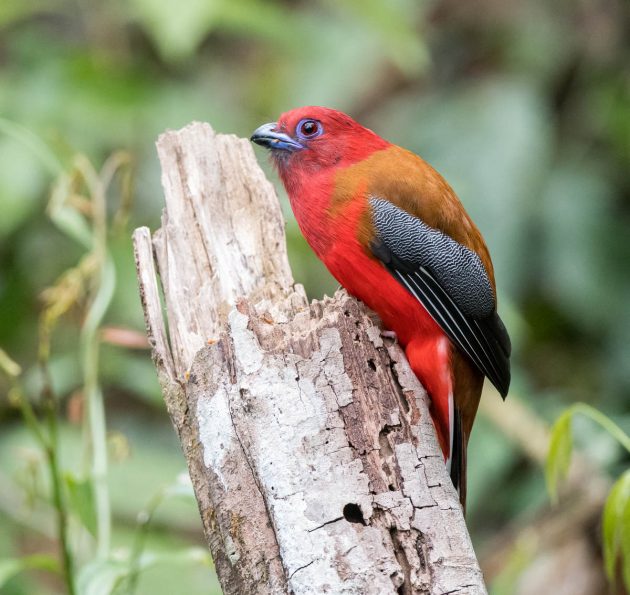
After all this, it is comforting to learn that the Red-whiskered Bulbul indeed has red whiskers.
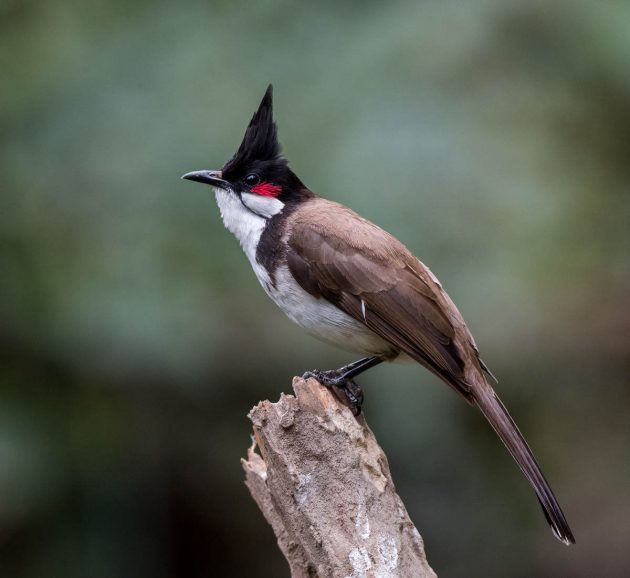
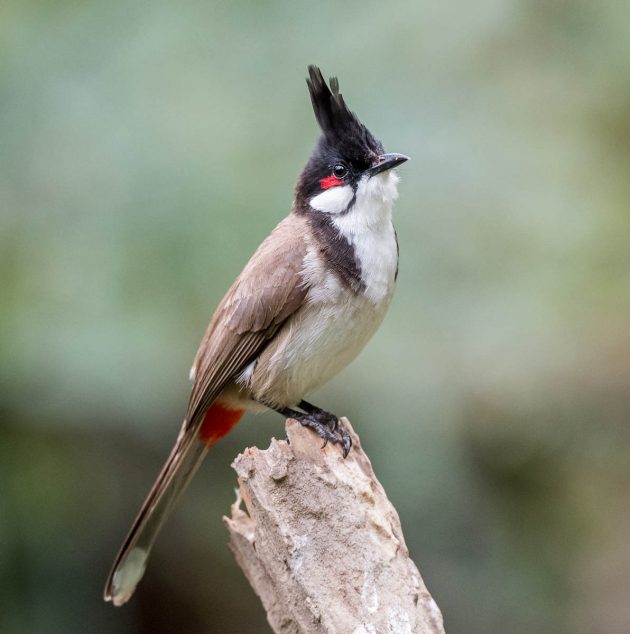
There are some other nice-looking bulbuls around here:
The Graceland-inspired Black-crested Bulbul (presumably managed by Colonel Parker) …
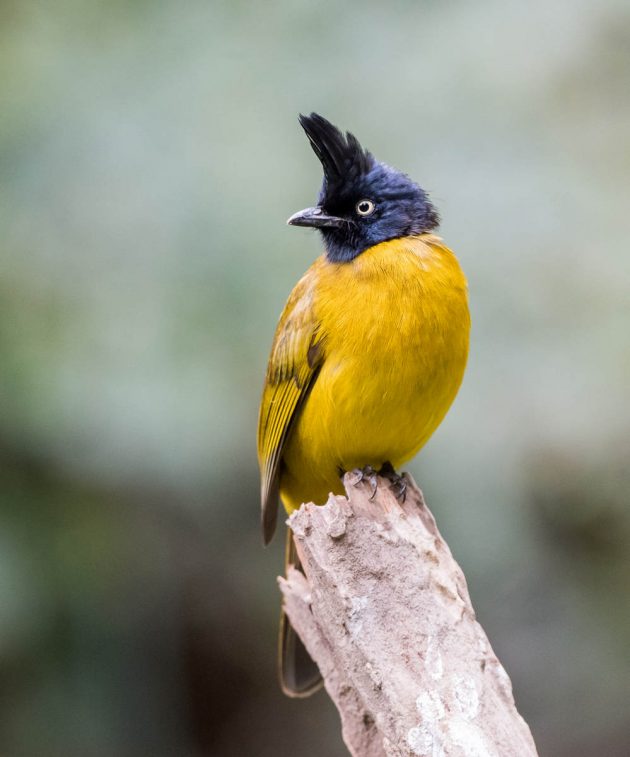
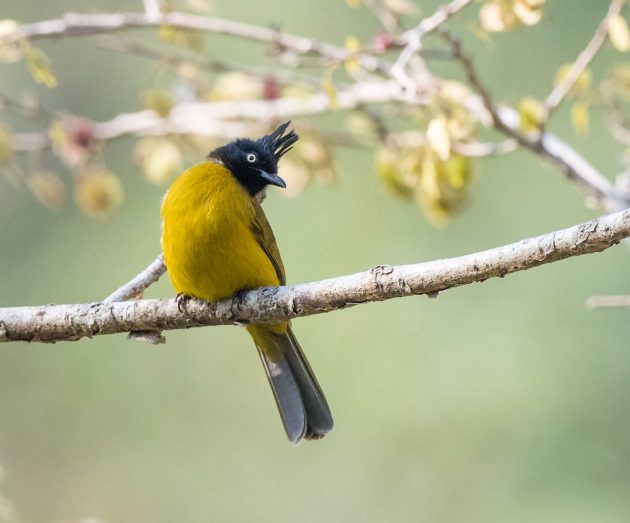
… the understated yet elegant Grey-eyed Bulbul …
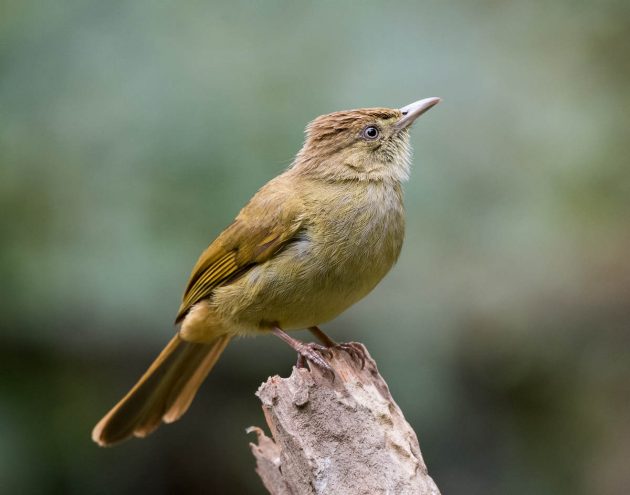
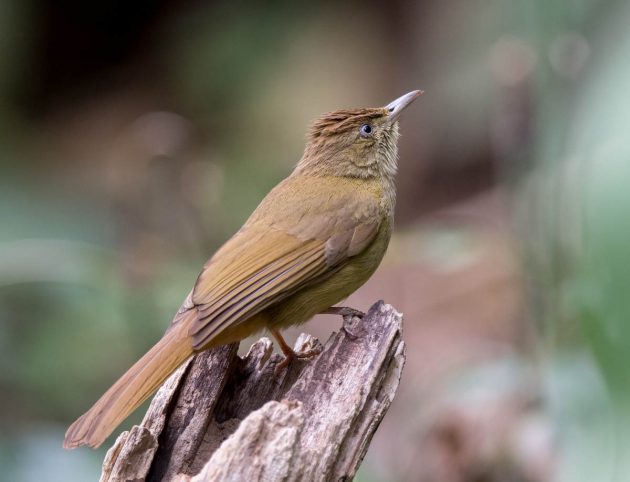
… and the terrifyingly social White-throated Bulbul (HBW: “roves in tight-knit parties of 6–15 individuals in winter”).
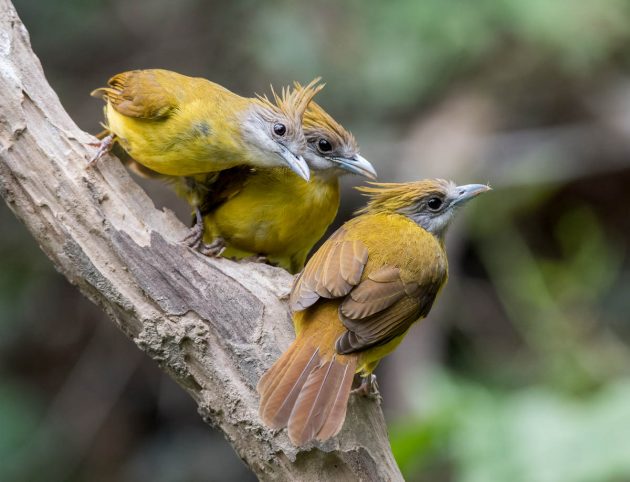
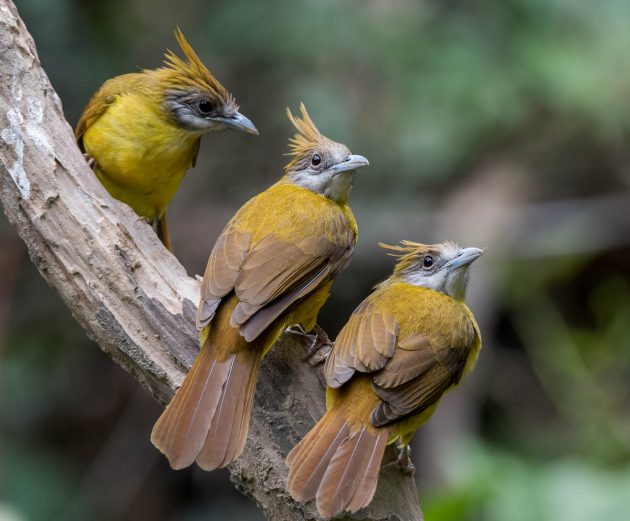
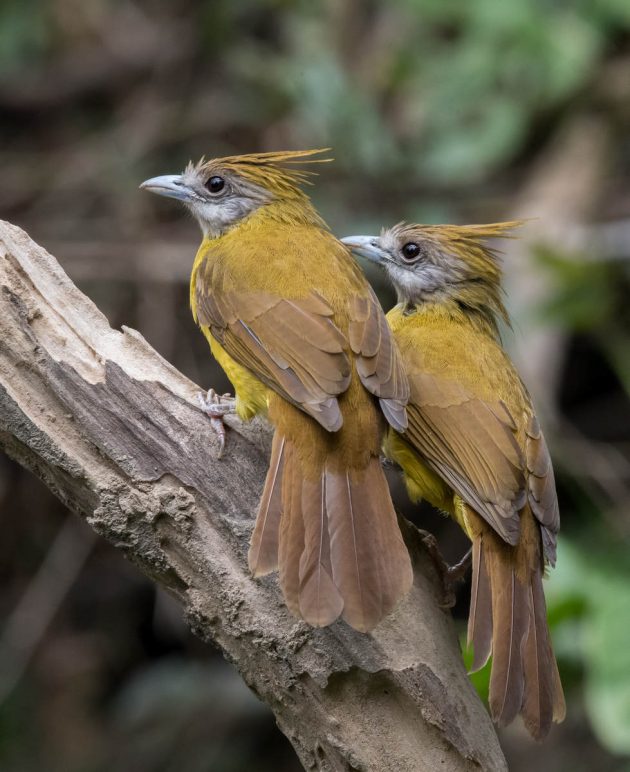
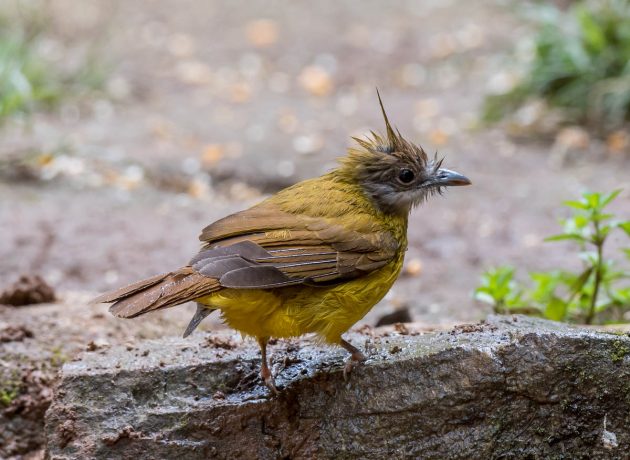
If you are afraid of spiders, you might want to get a pet Streaked Spiderhunter. I am only joking! Birds should be free.
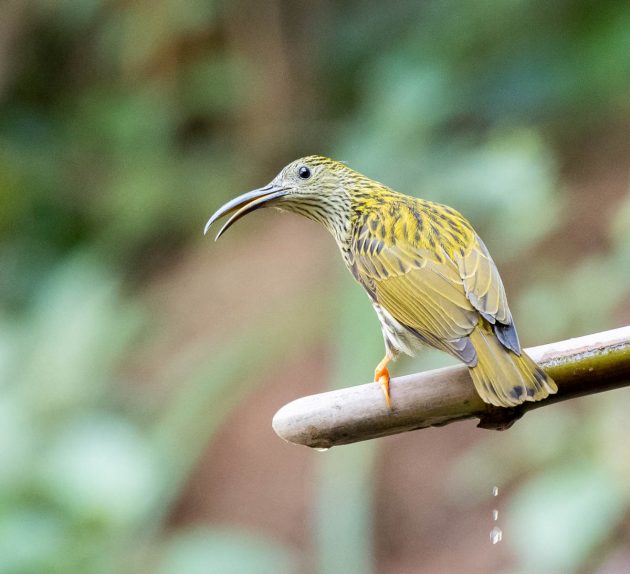
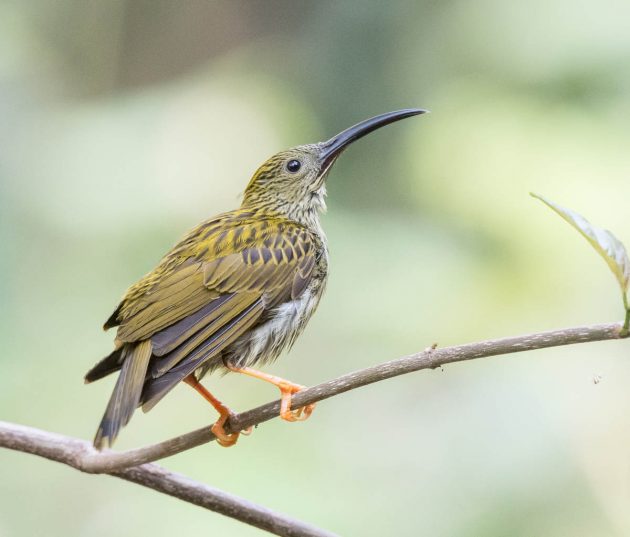
The photos of Sultan Tit that I got at Hongbenghe in 2017 were much better than the ones I got on Hainan in 2022. A worrying trend.
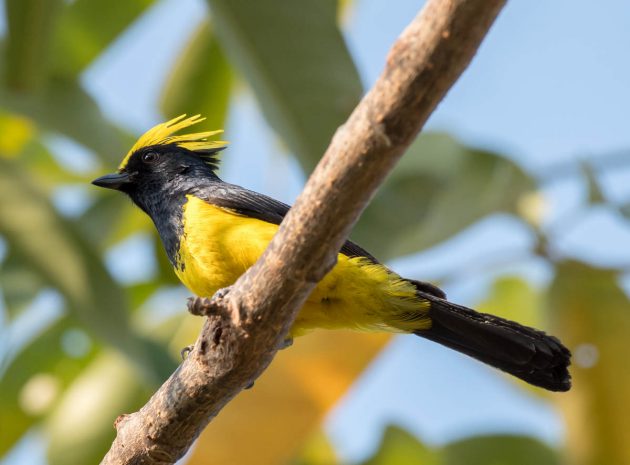
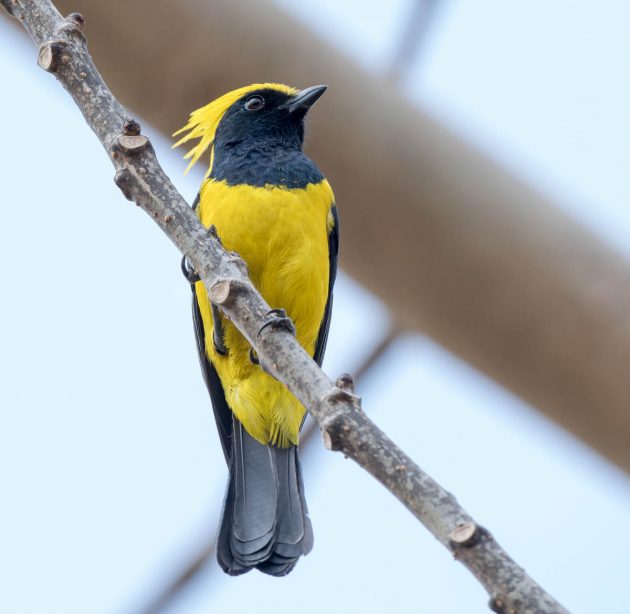
The Velvet-fronted Nuthatch is a beautiful bird that in some of its locations is protected by superstition (Wikipedia): “The Lotha Naga people will hunt many birds for food but the velvet-fronted nuthatch is generally proscribed due to the belief that killing them would bring misfortune to the hunter. The birds forage in flocks and members are believed to stay on nearby if one is killed, according to the Lothas, they will wait to be killed and the hunter would soon see people around him die in quick succession one after another.”
Some superstition surely should be supported.
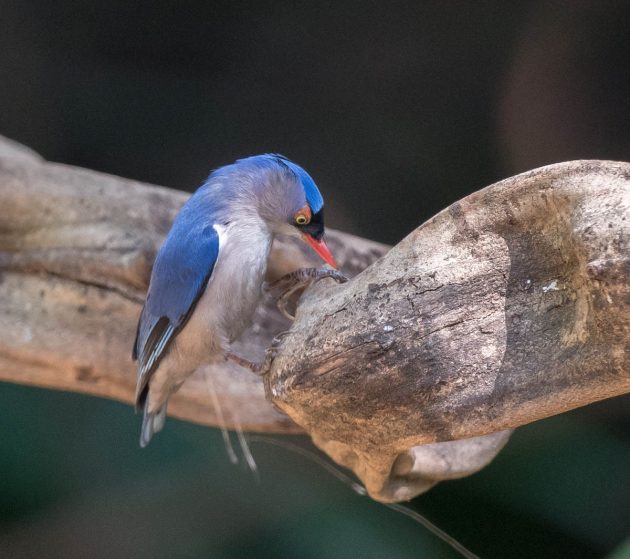
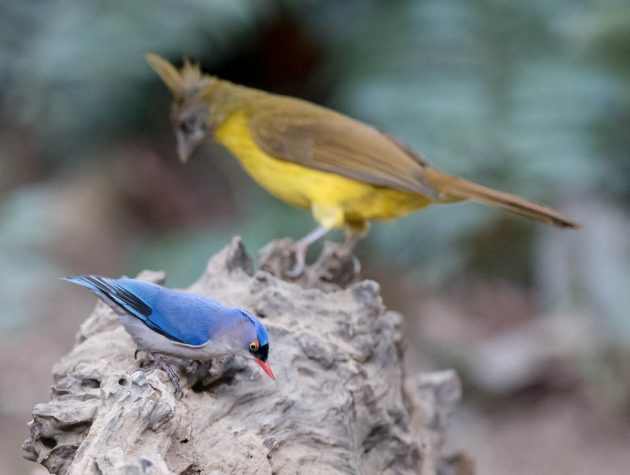
The White-crowned Forktail is one of the 5 forktail species that can be found in China, out of a total of 7 species. Except for one non-Chinese one (Chestnut-naped Forktail, which I would really like to see), they all have a similar color scheme – black/dark bluish and white. The White-crowned Forktail is the largest among them.
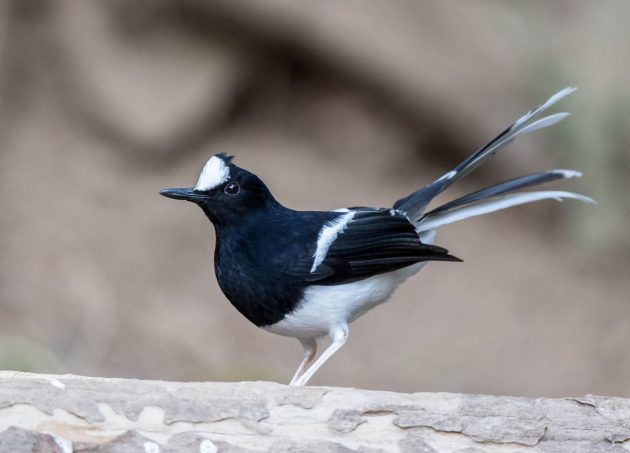
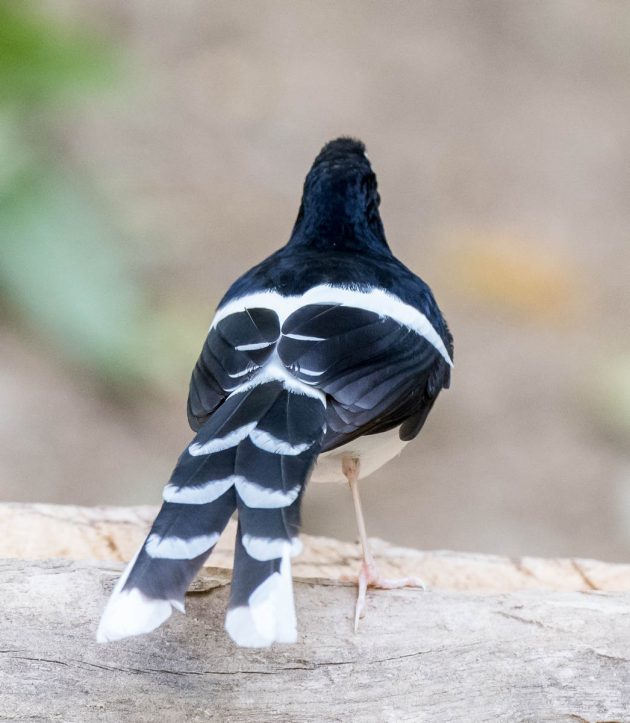
The White-rumped Shama is a South Asia species – consequently, the HBW mostly discusses its introduced population in Hawaii. Maybe studying caged birds would have been even more convenient for ornithologists.
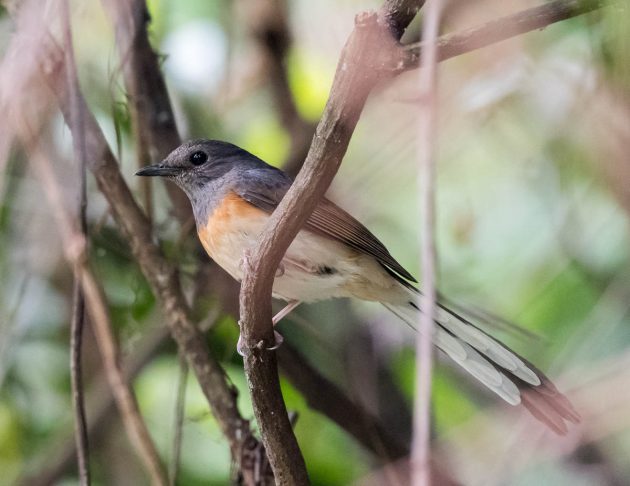
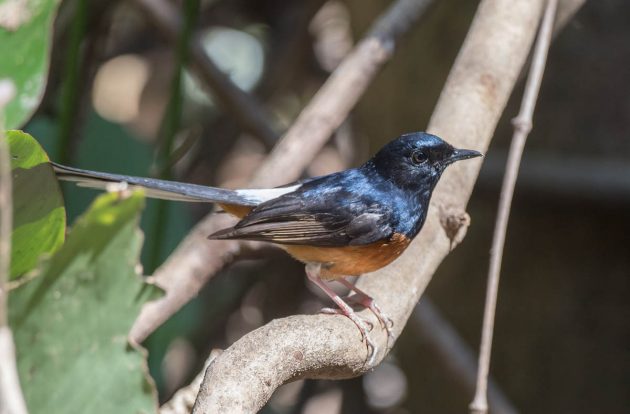
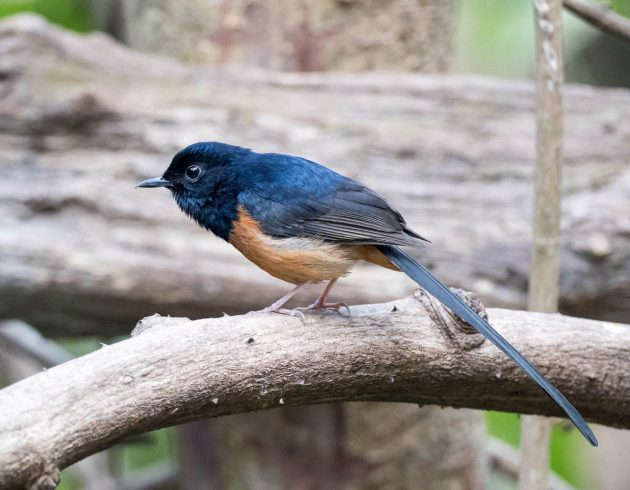
When a male White-tailed Robin wants to travel incognito, it just hides the white bits on its tail. It seems that this is easy.
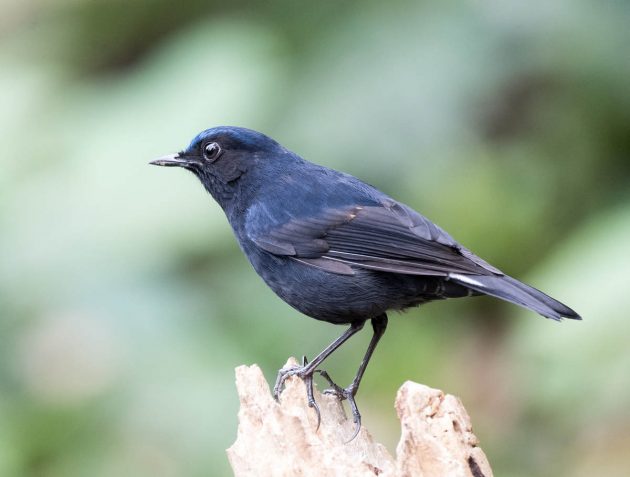
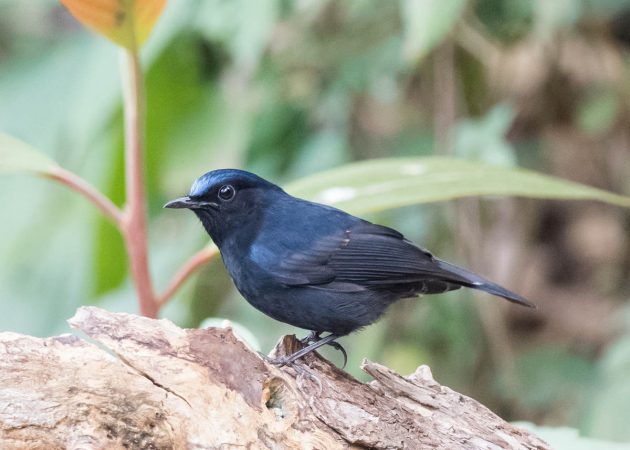
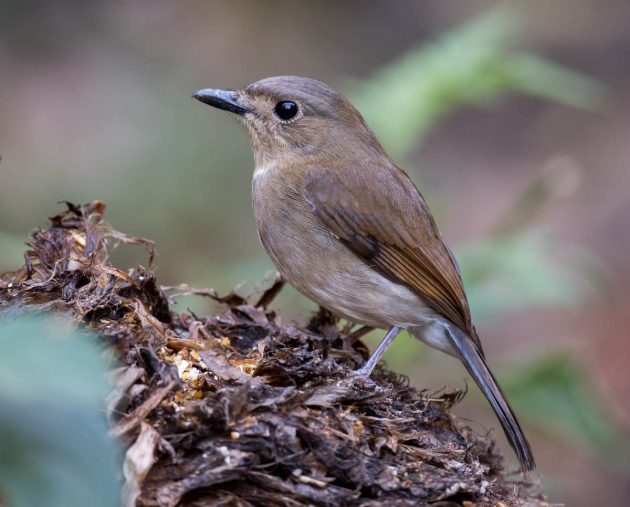
The Emerald Dove ends this post, mostly because the last photo makes a good (if slightly predictable) ending to this post.
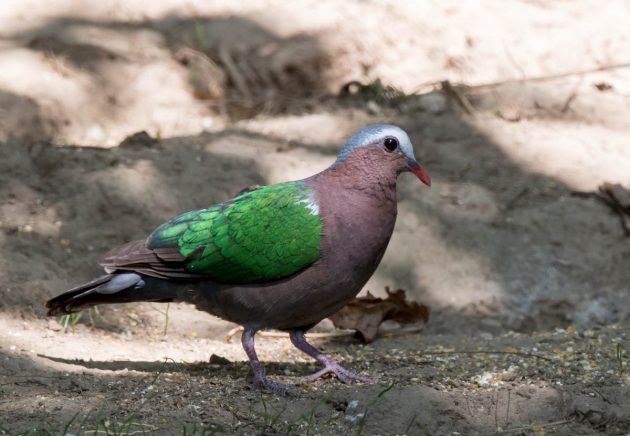
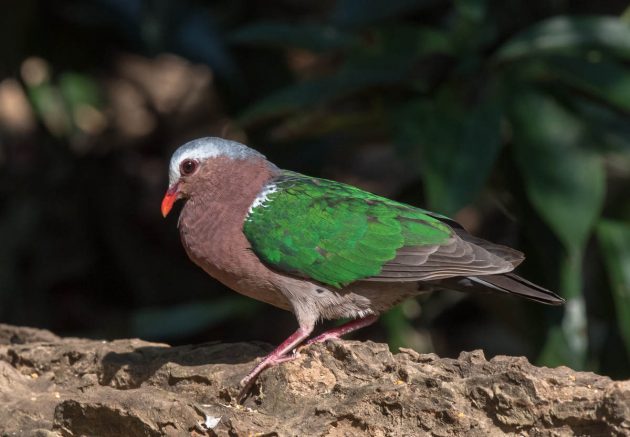
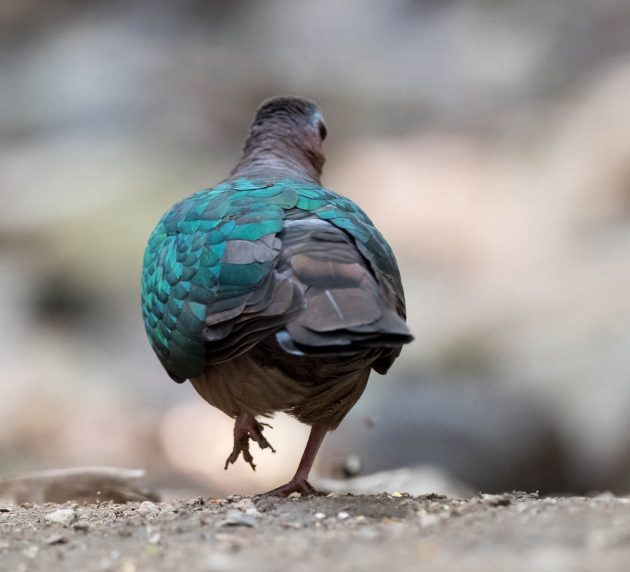













No Japanese tits down there?